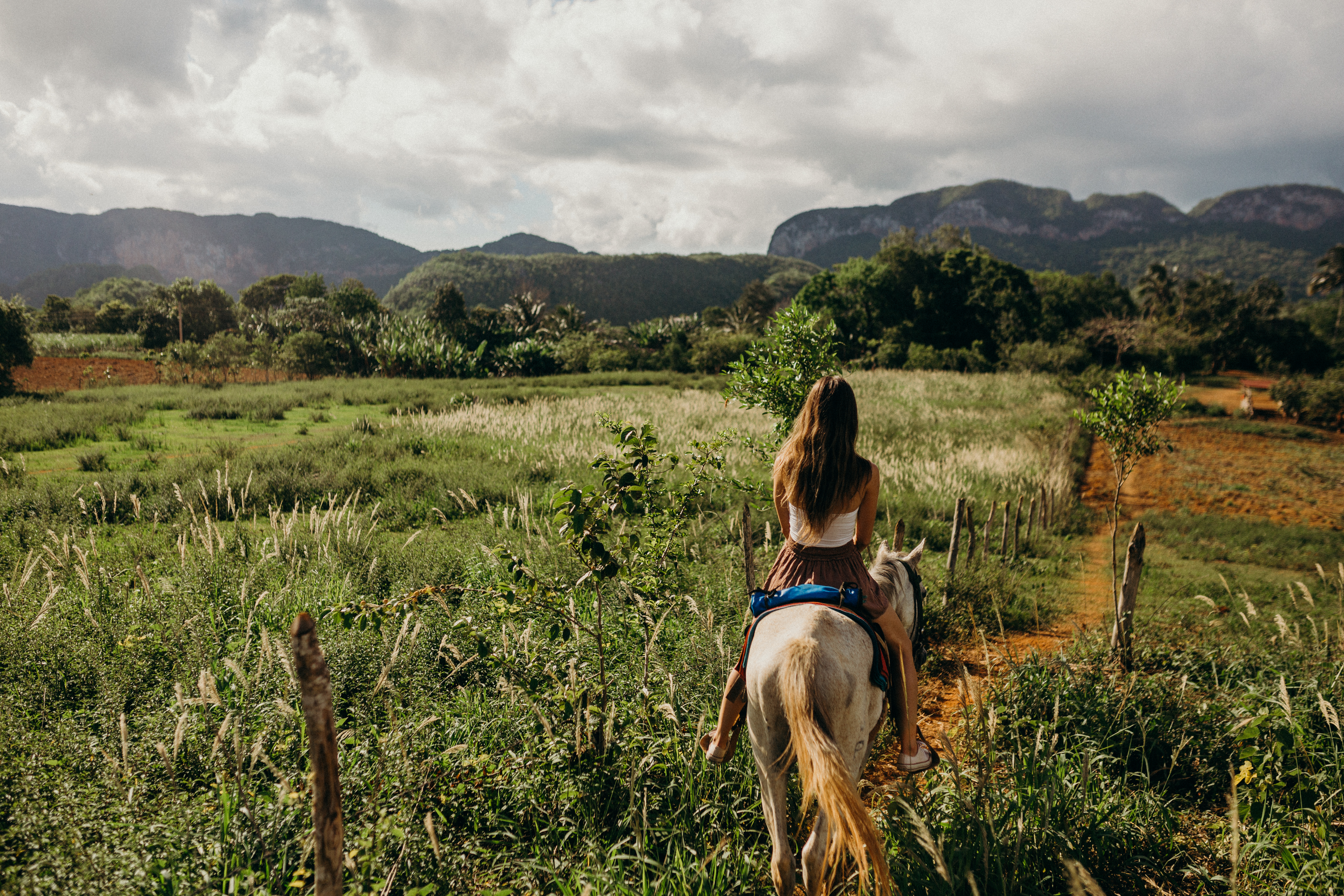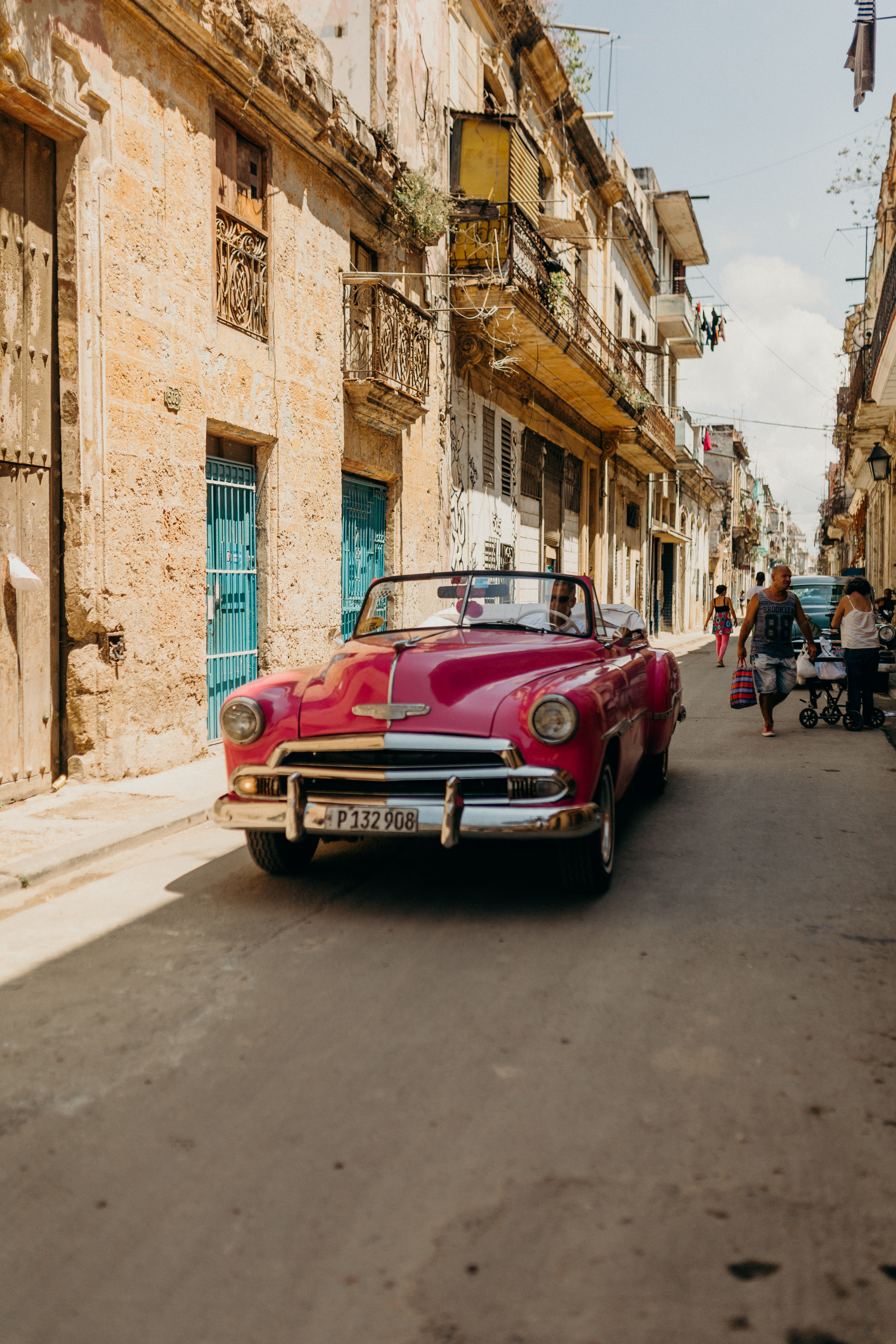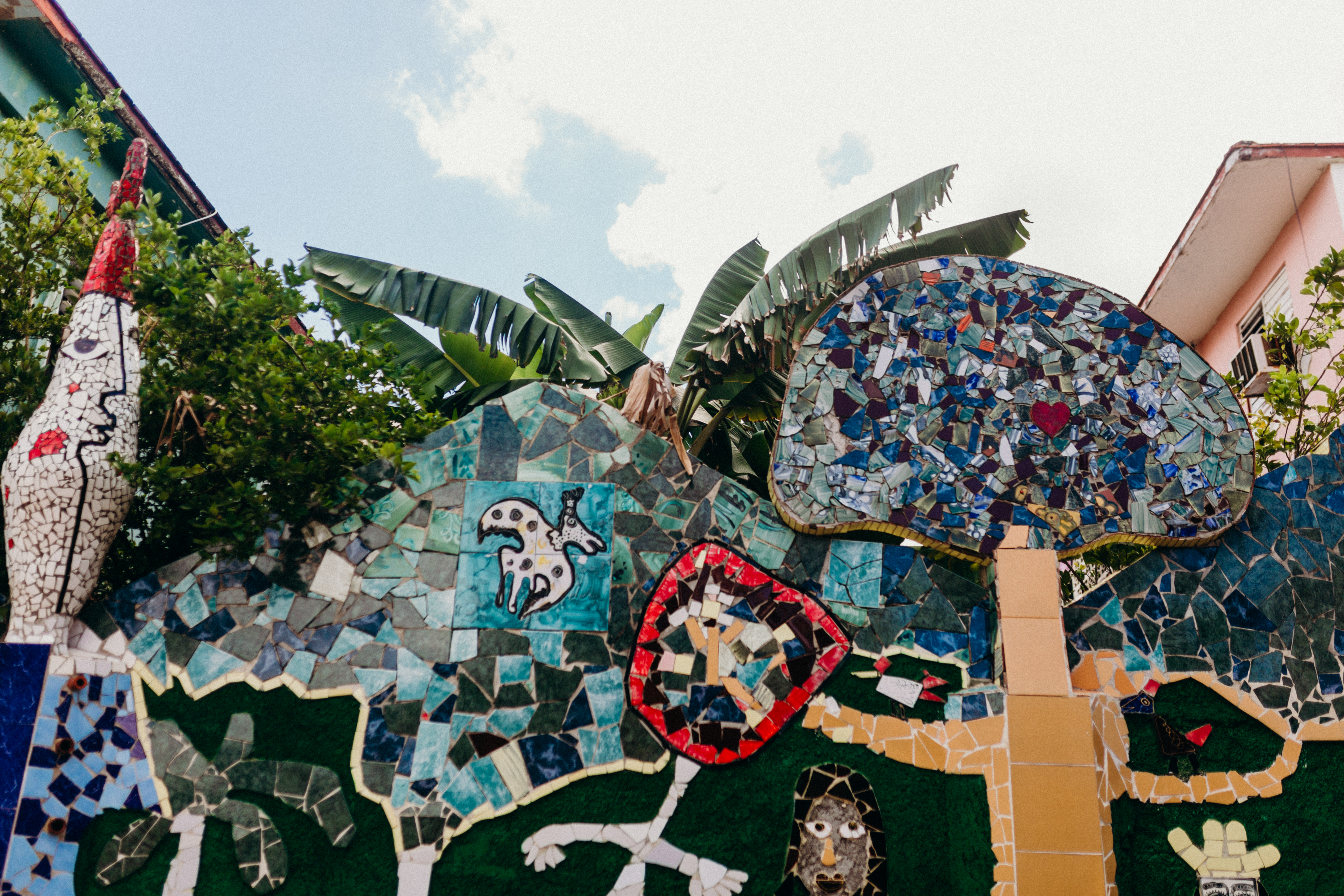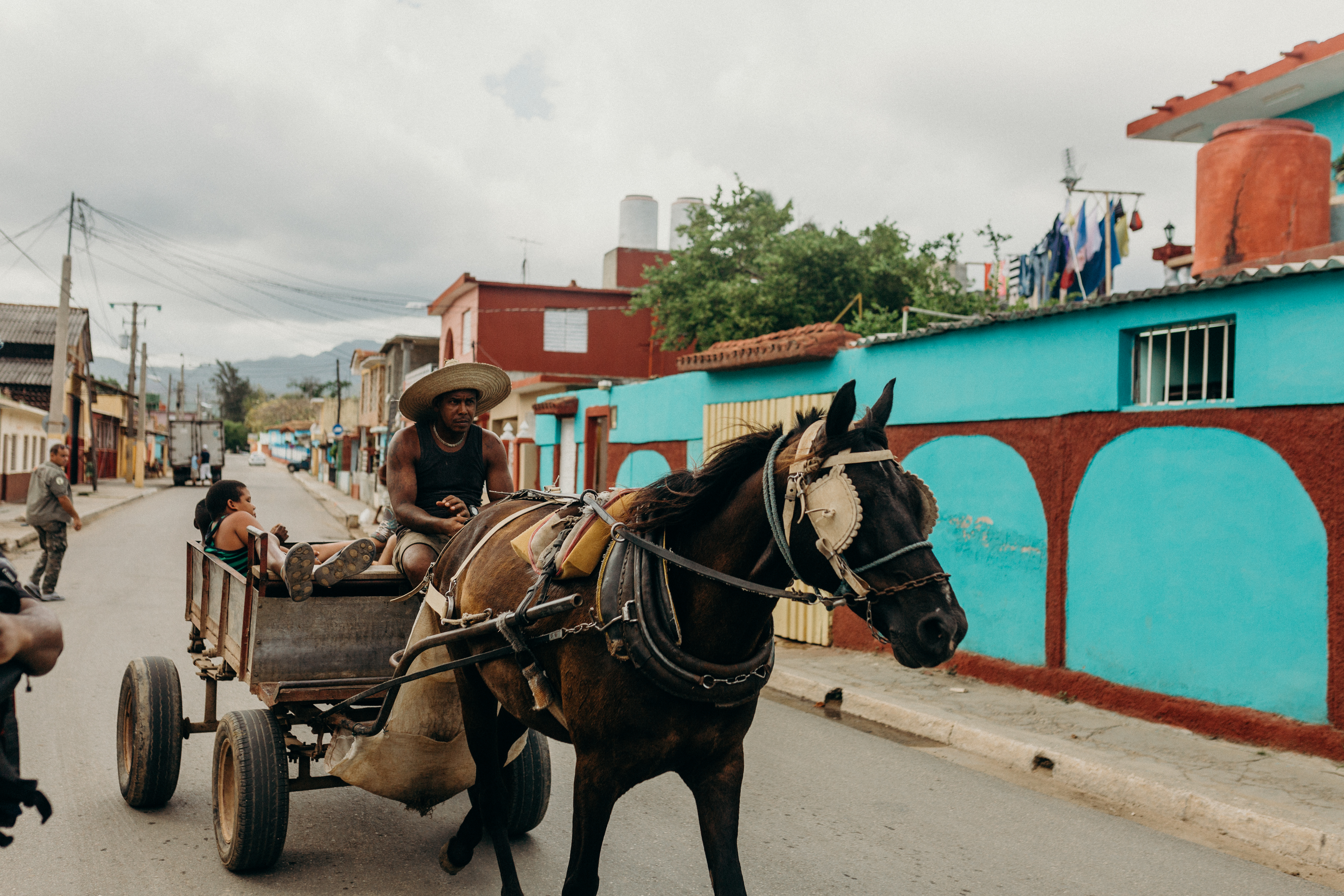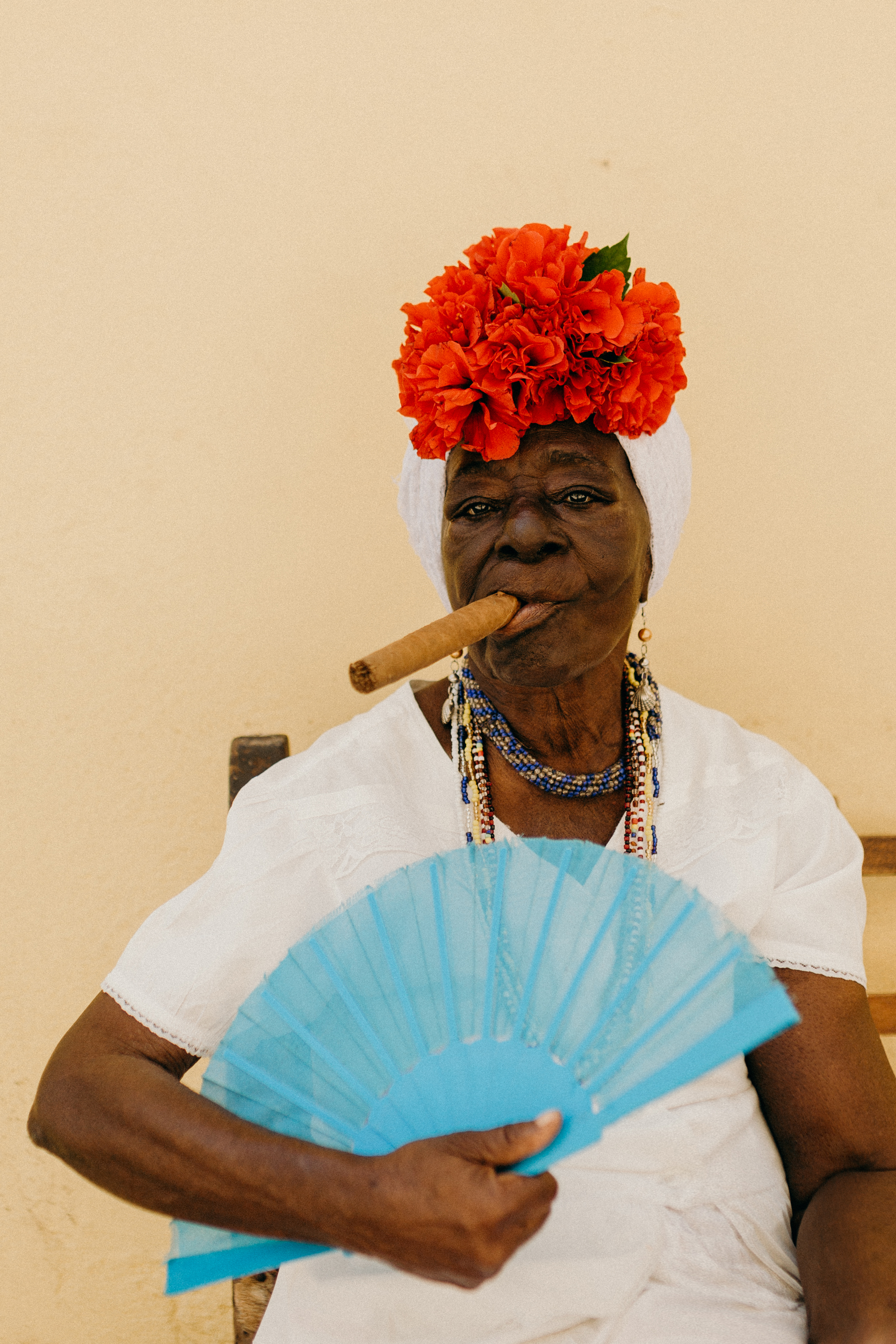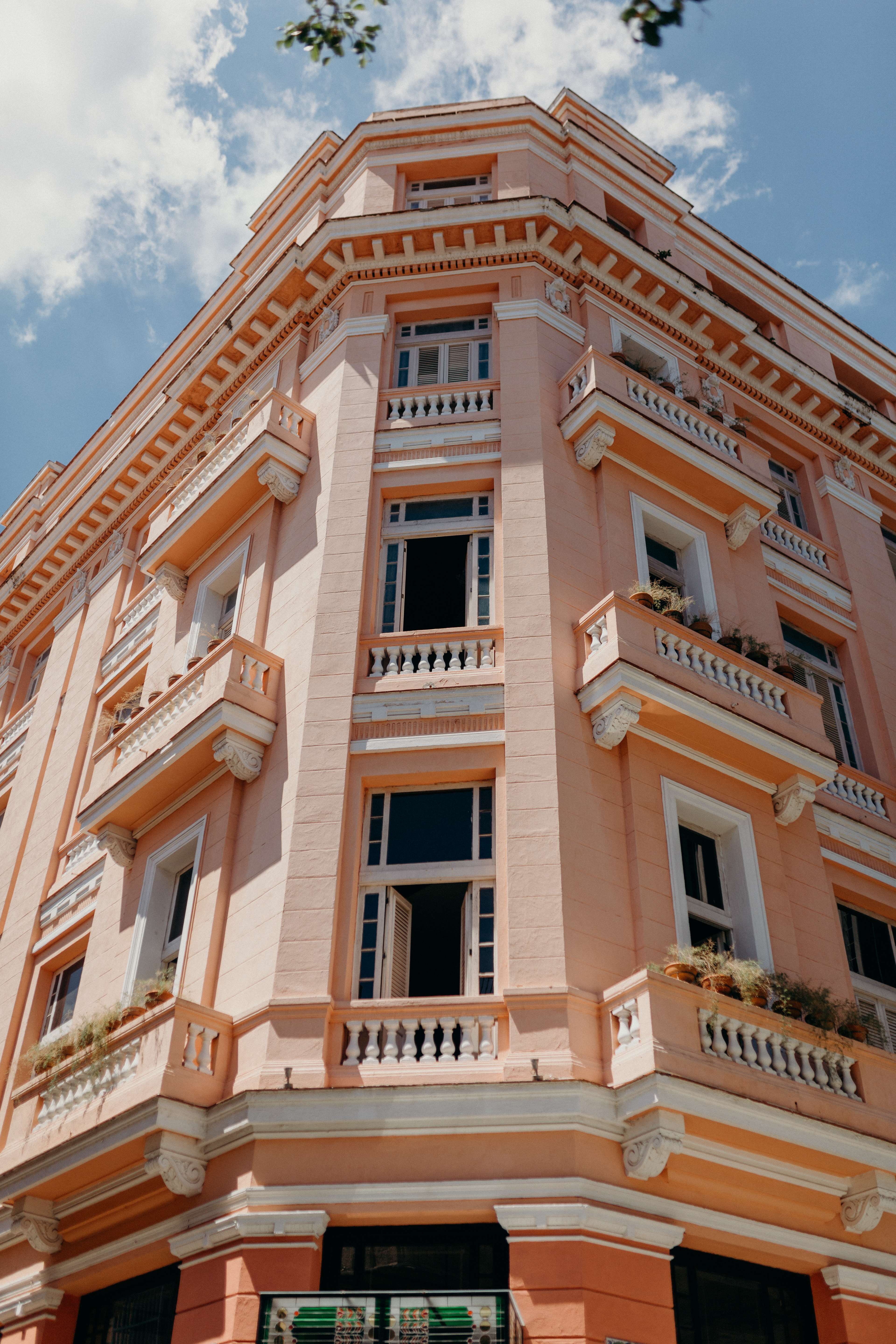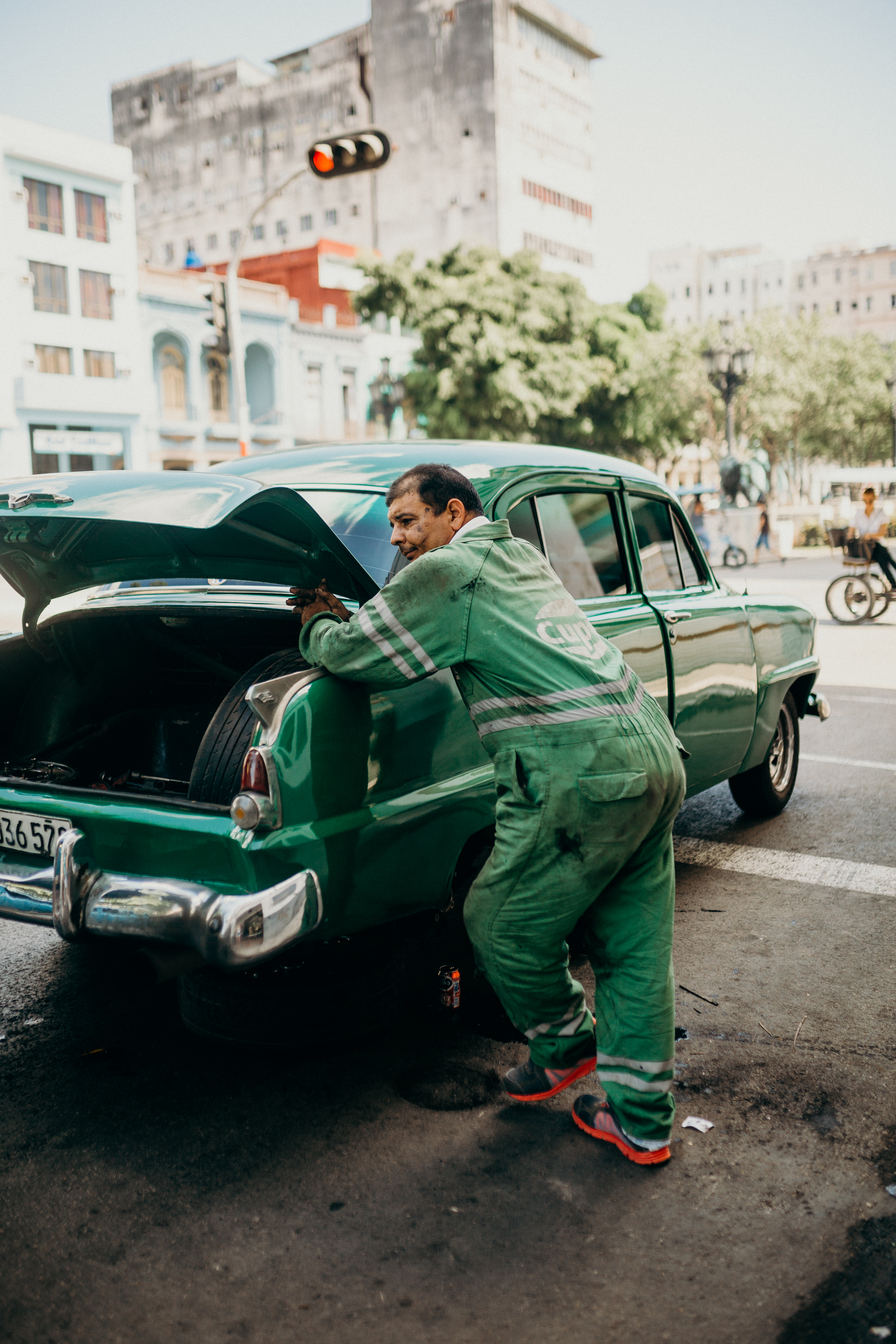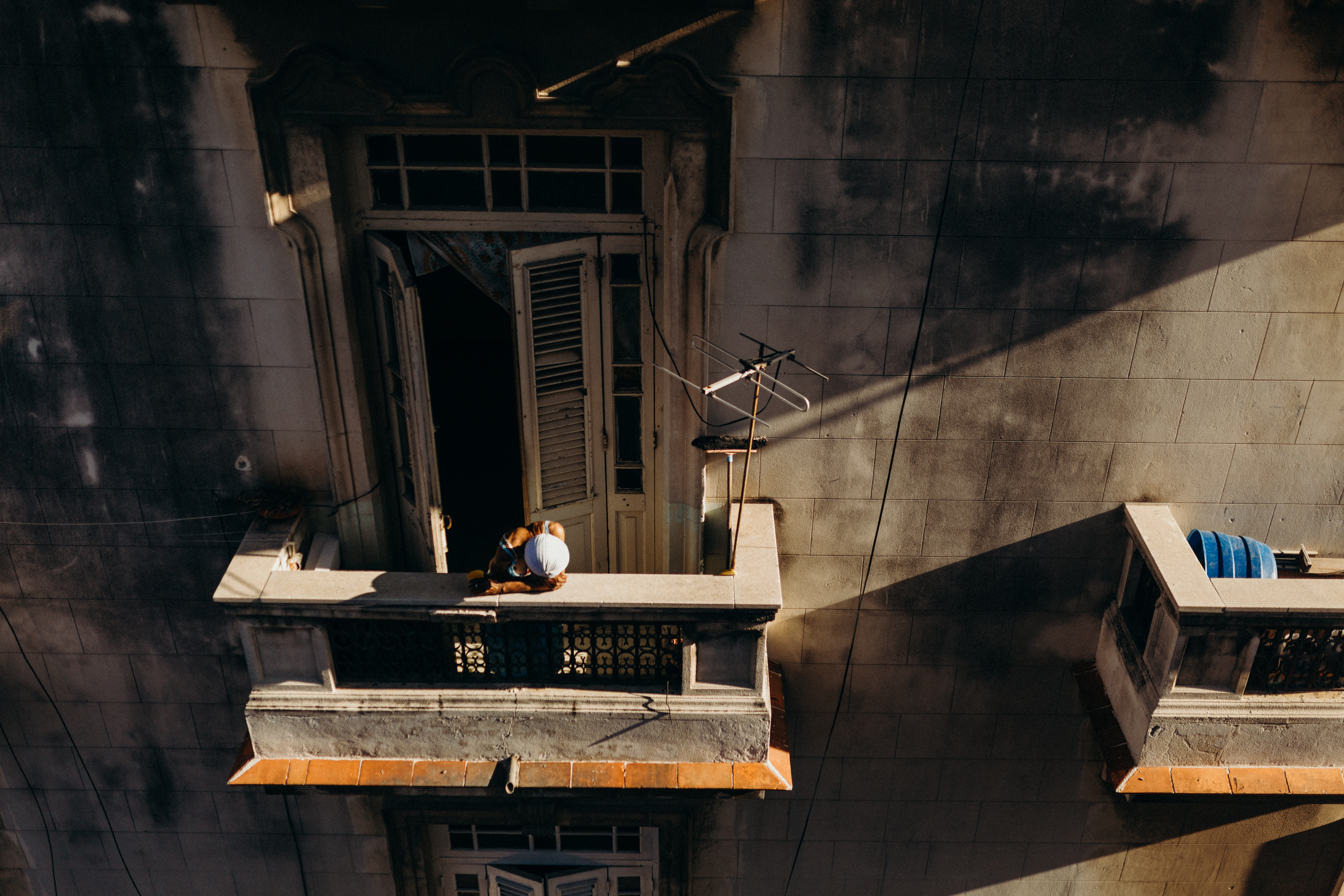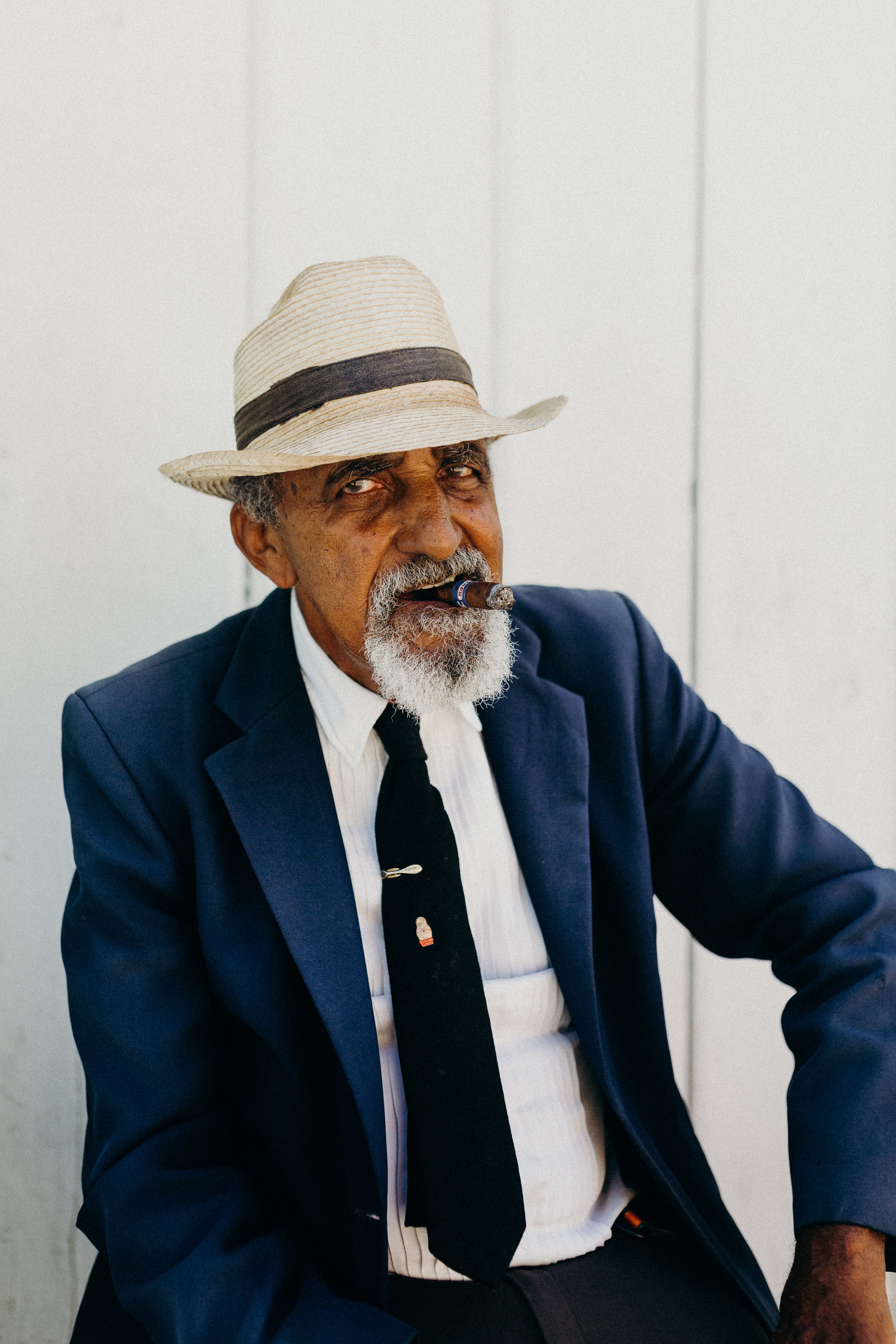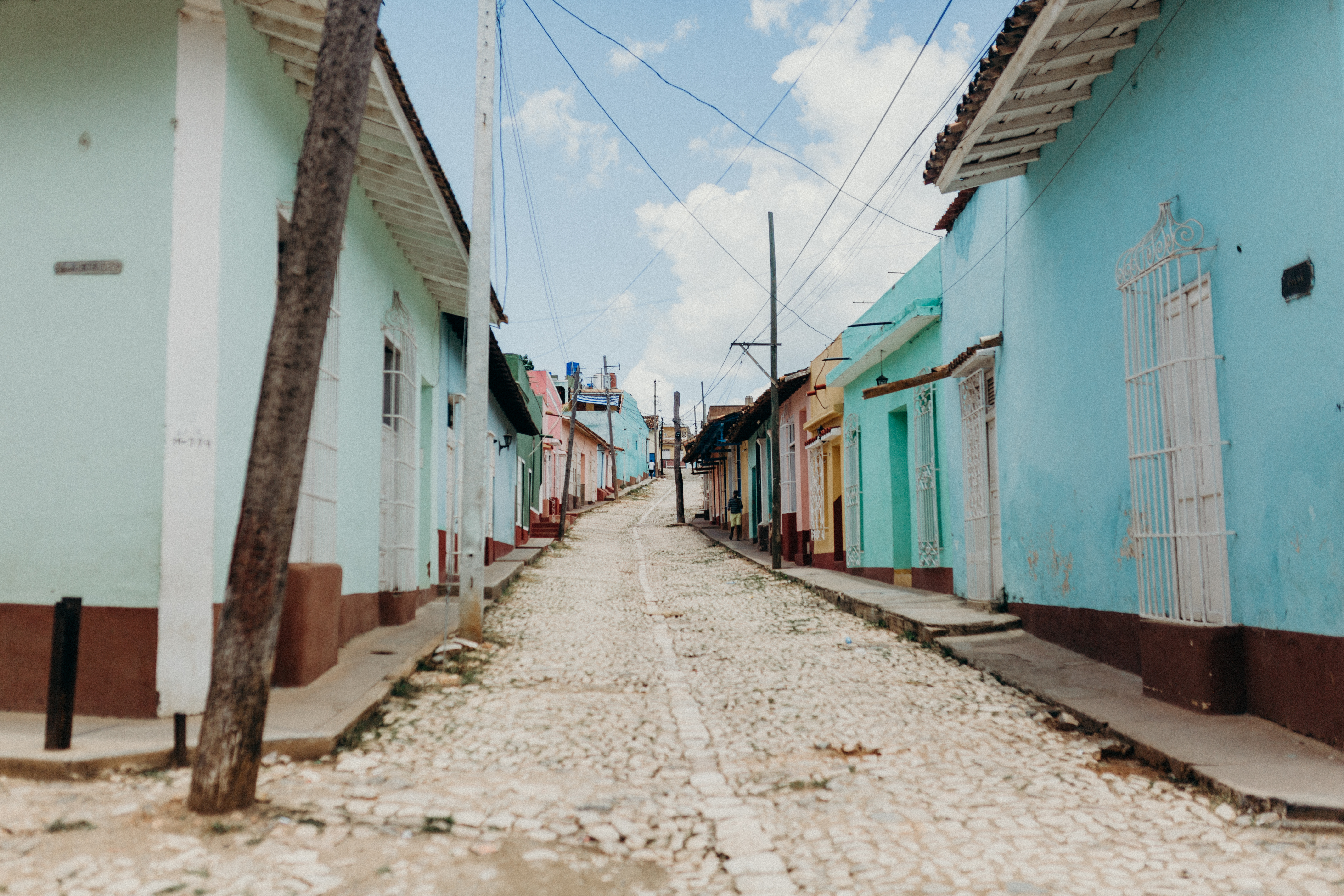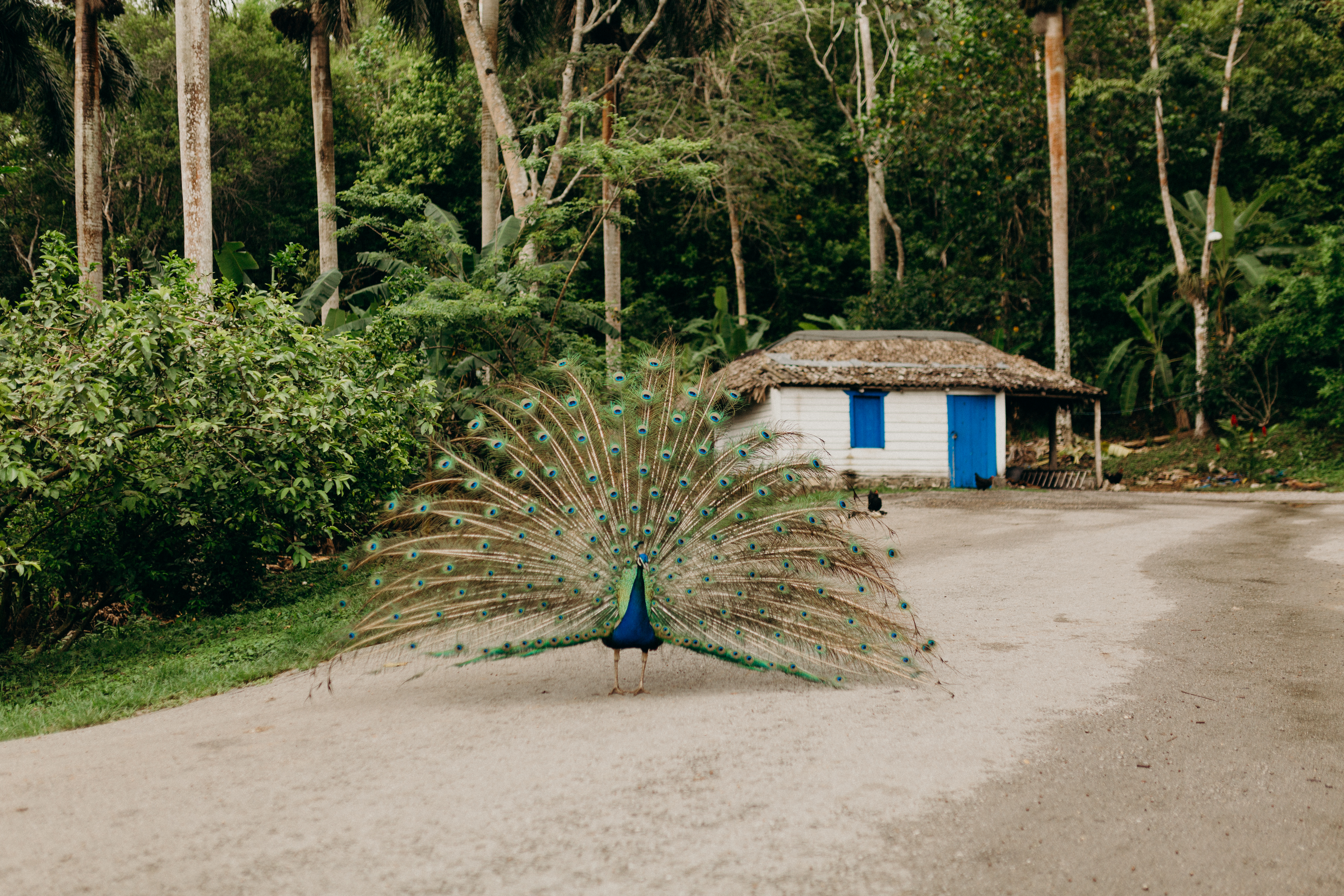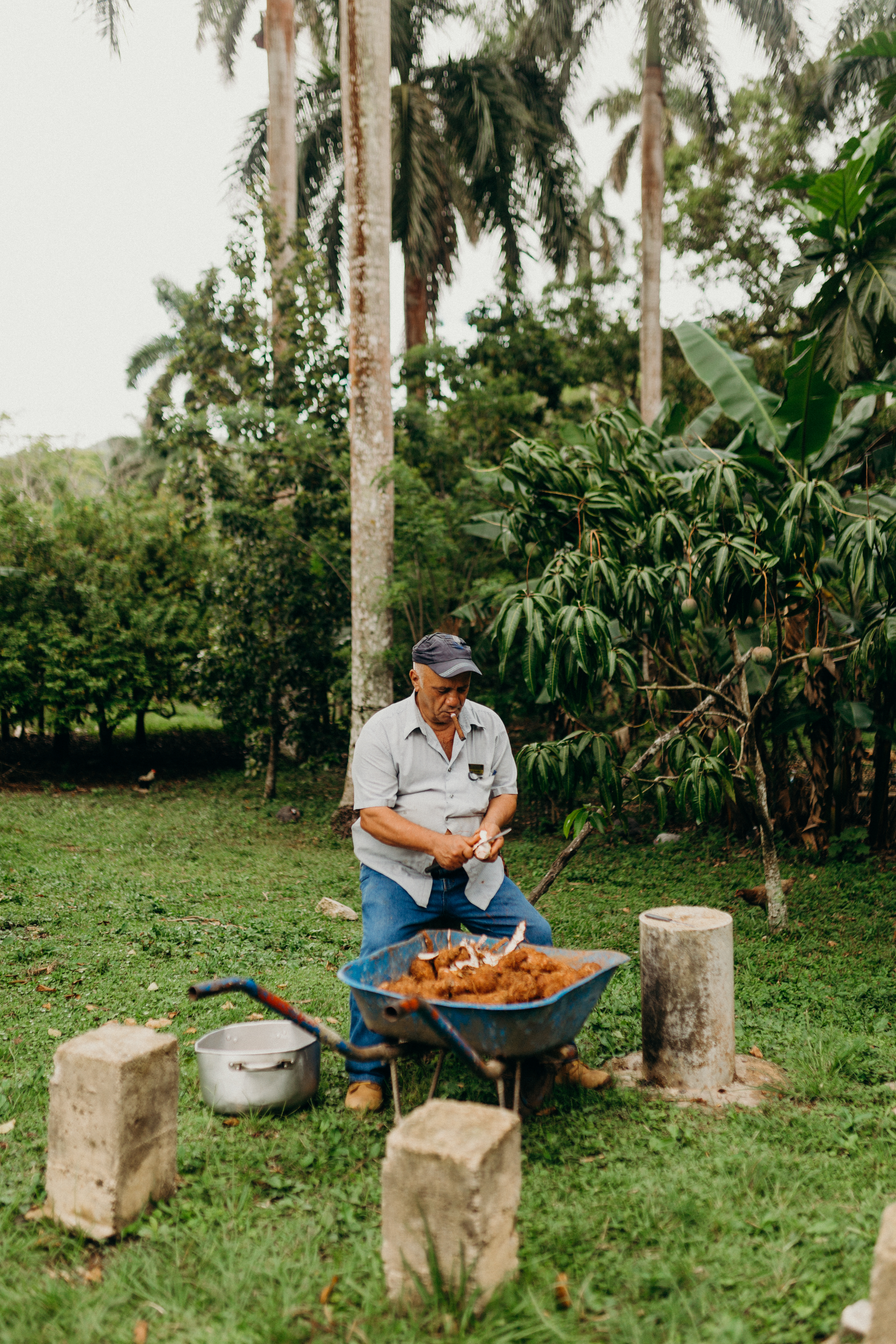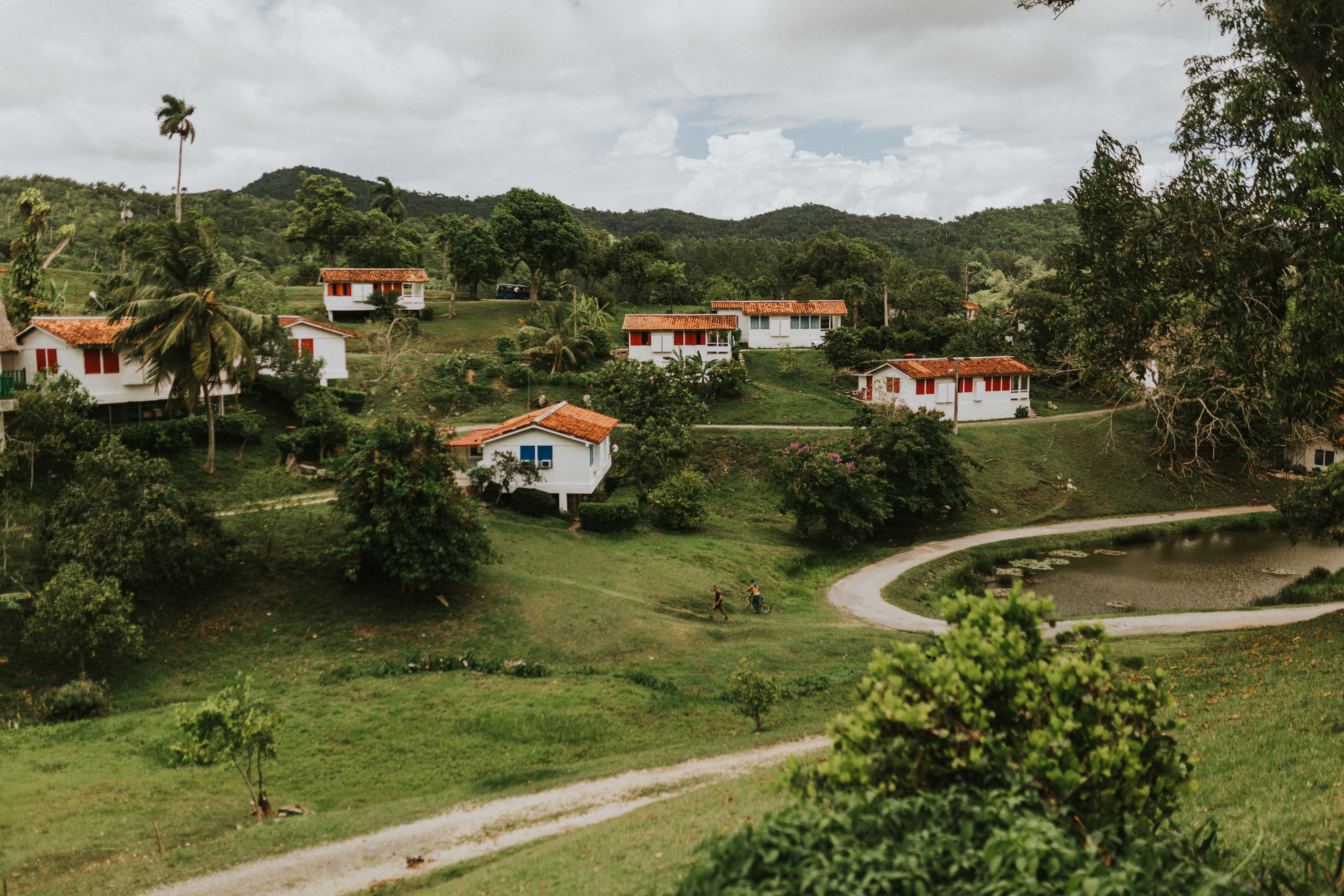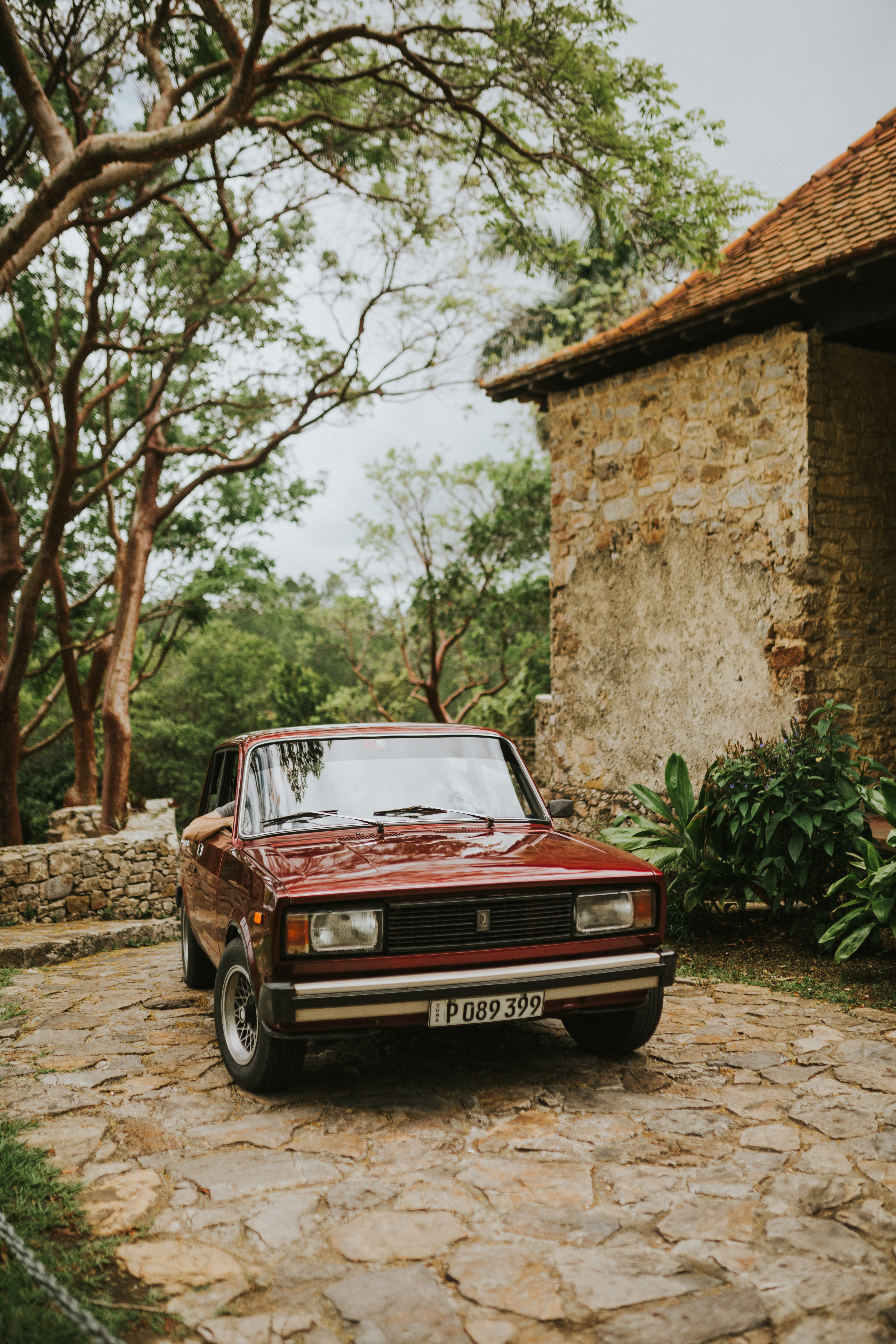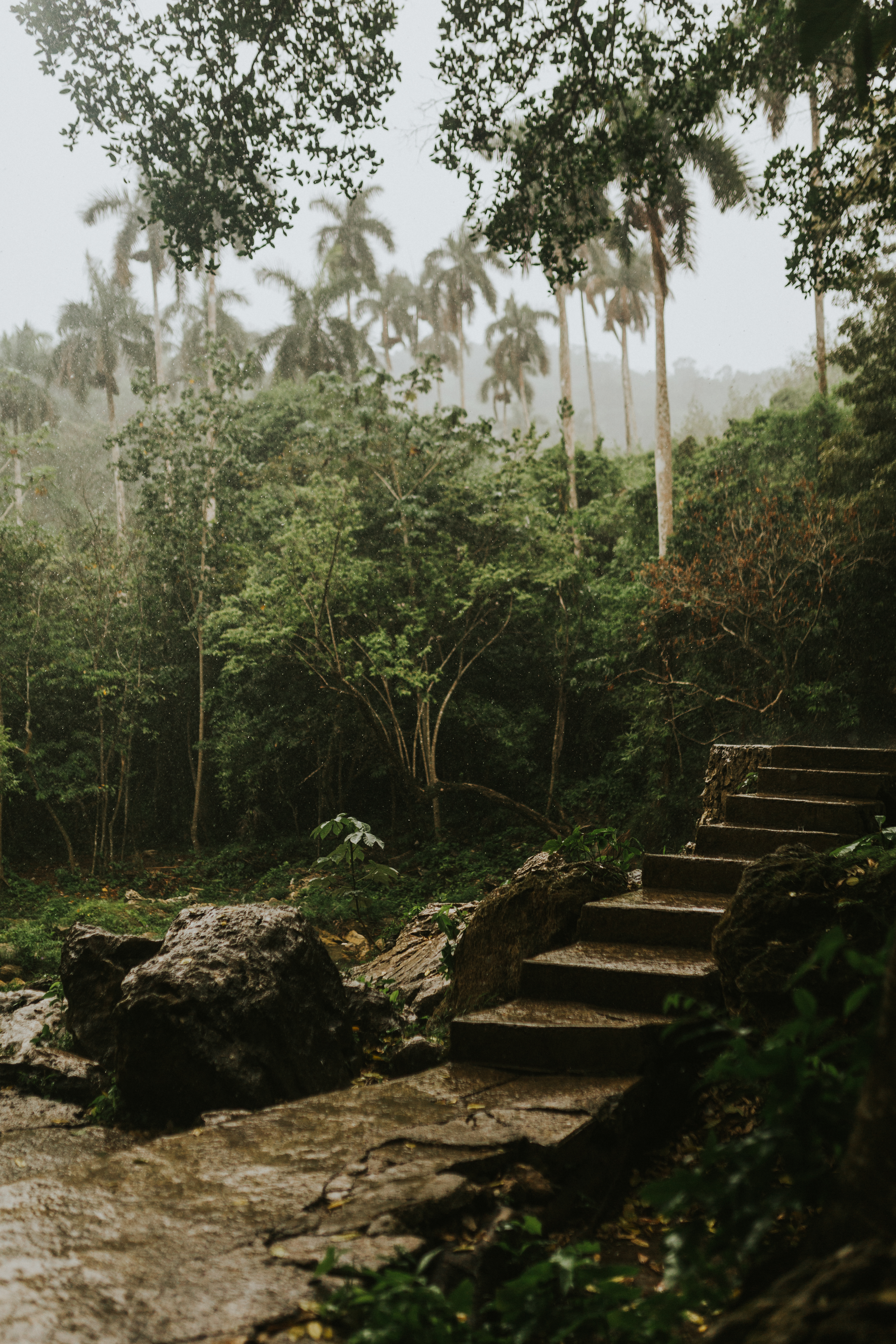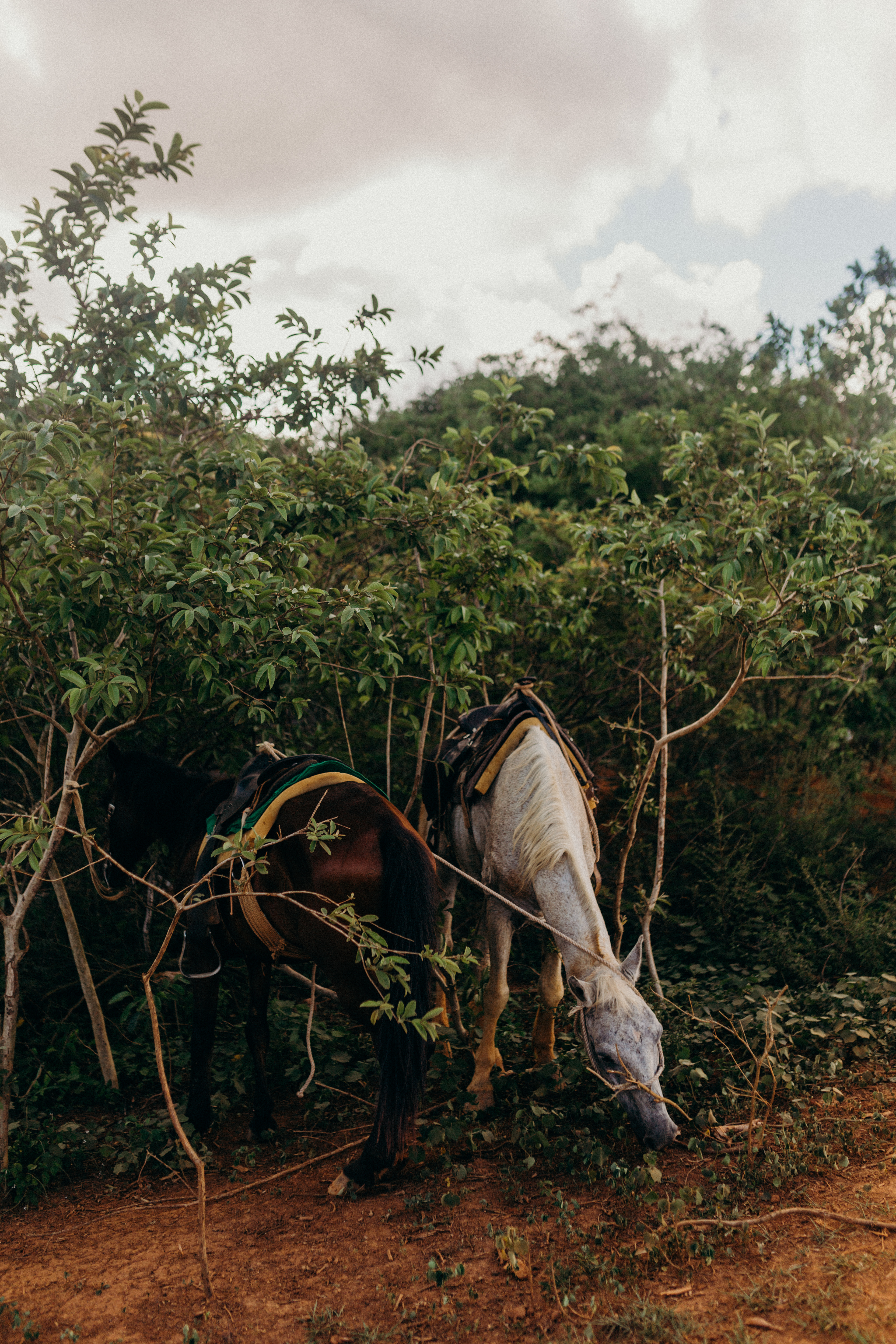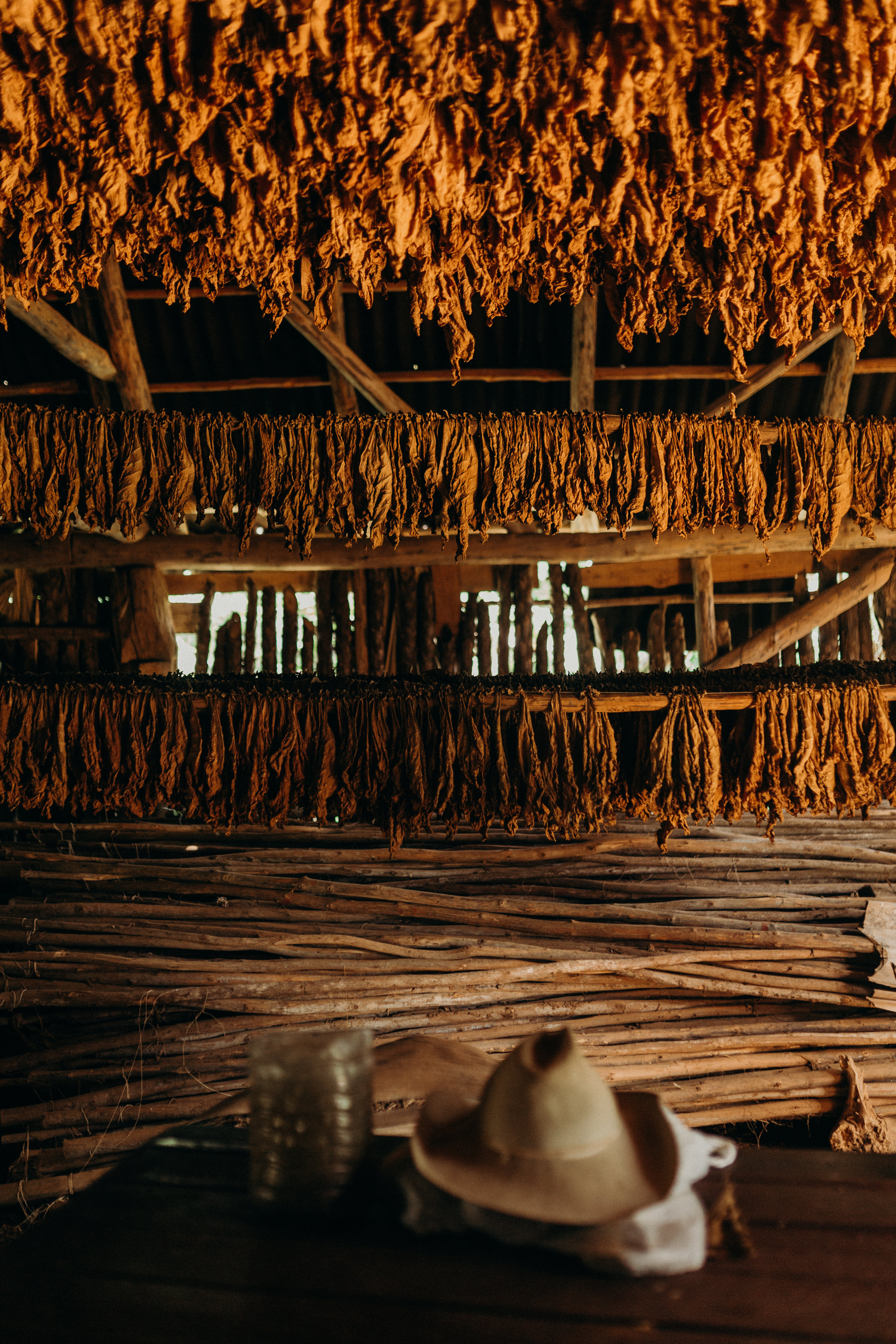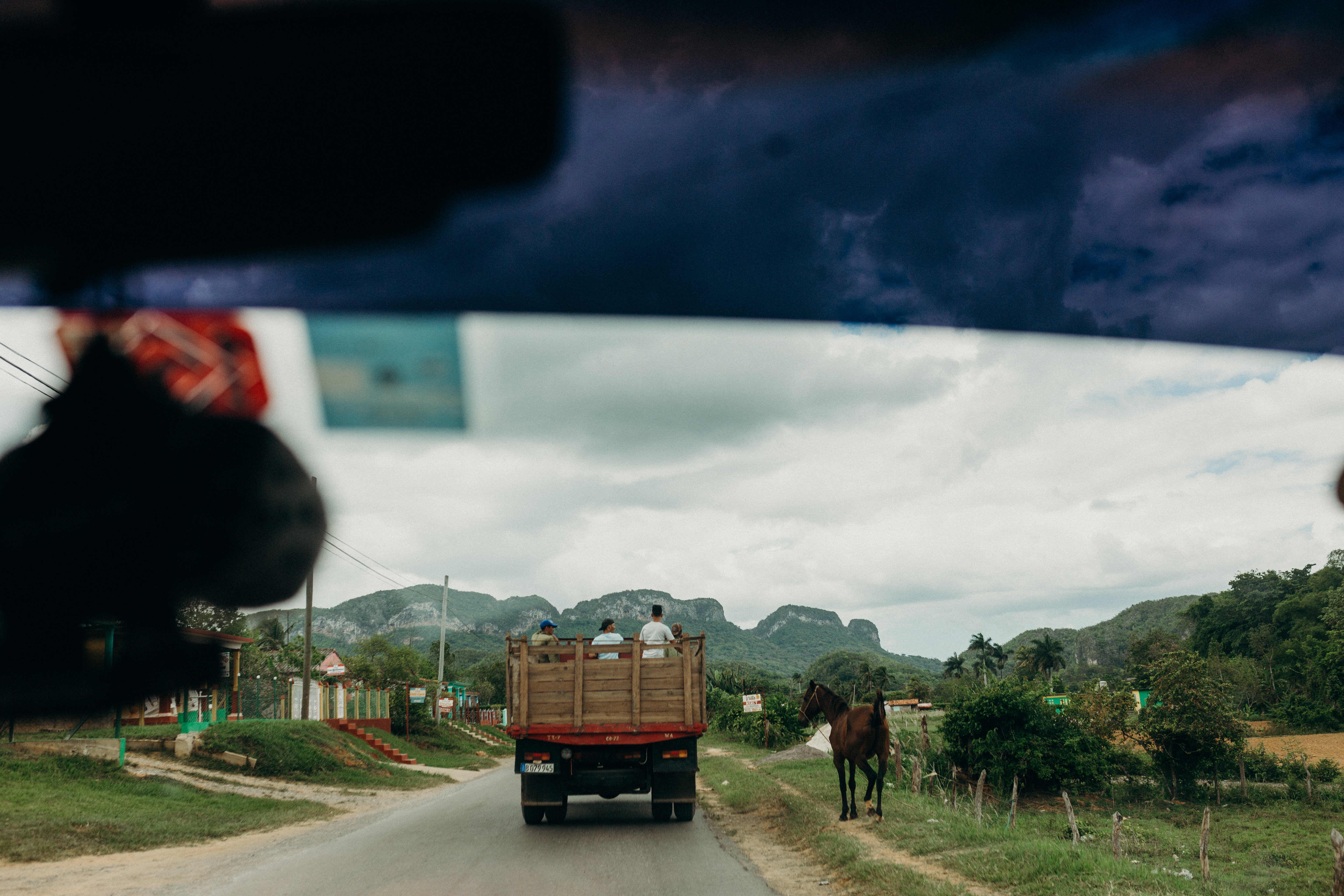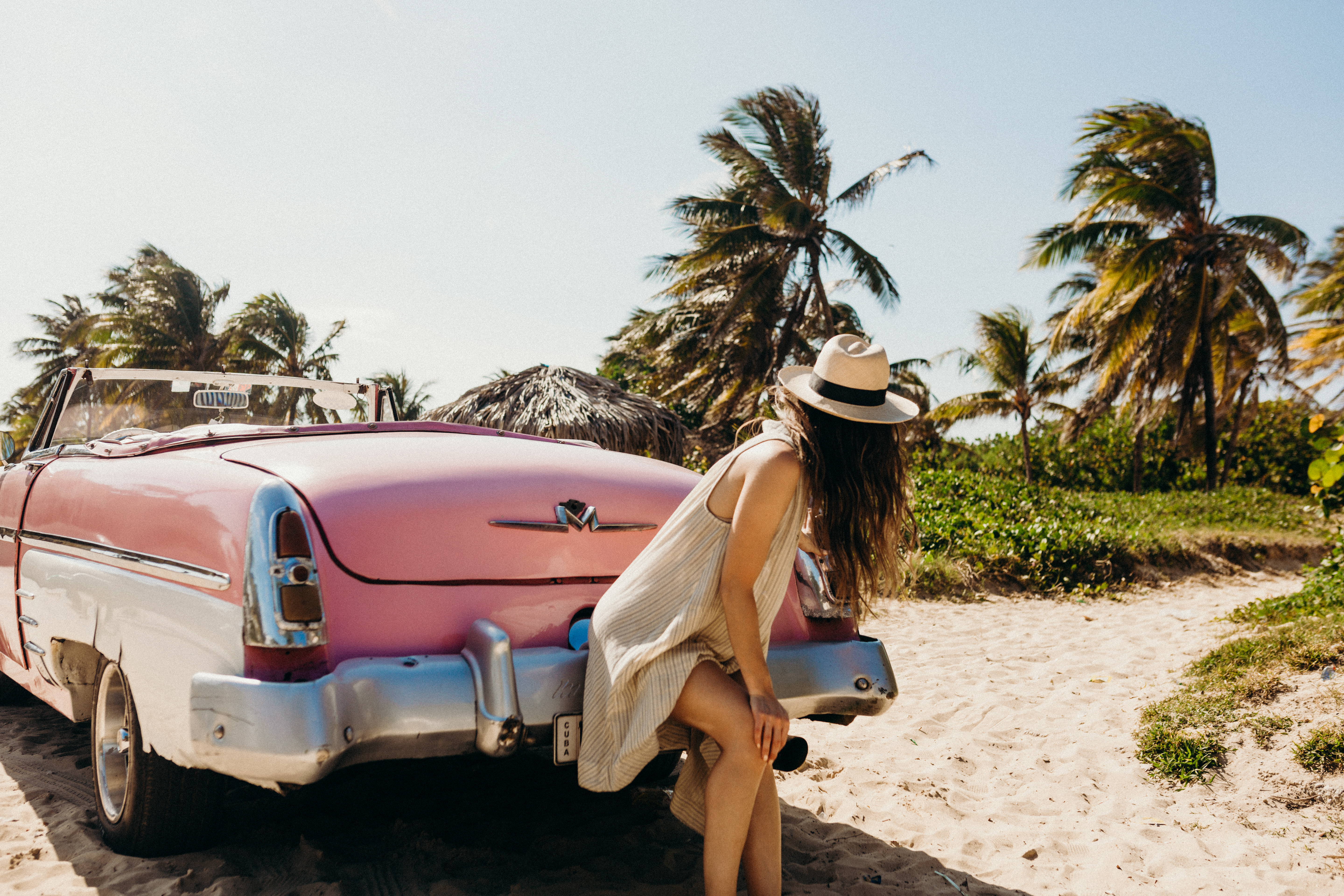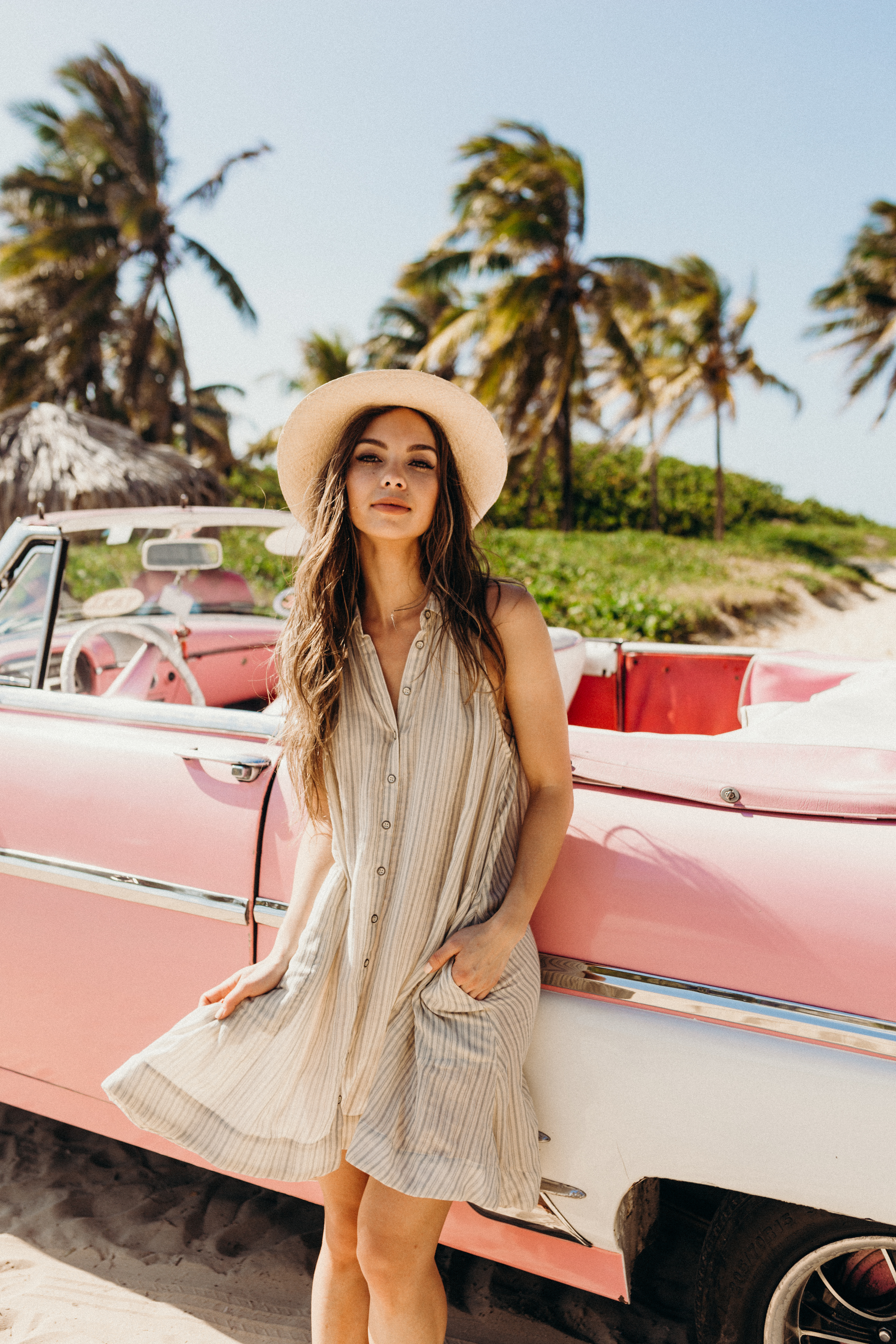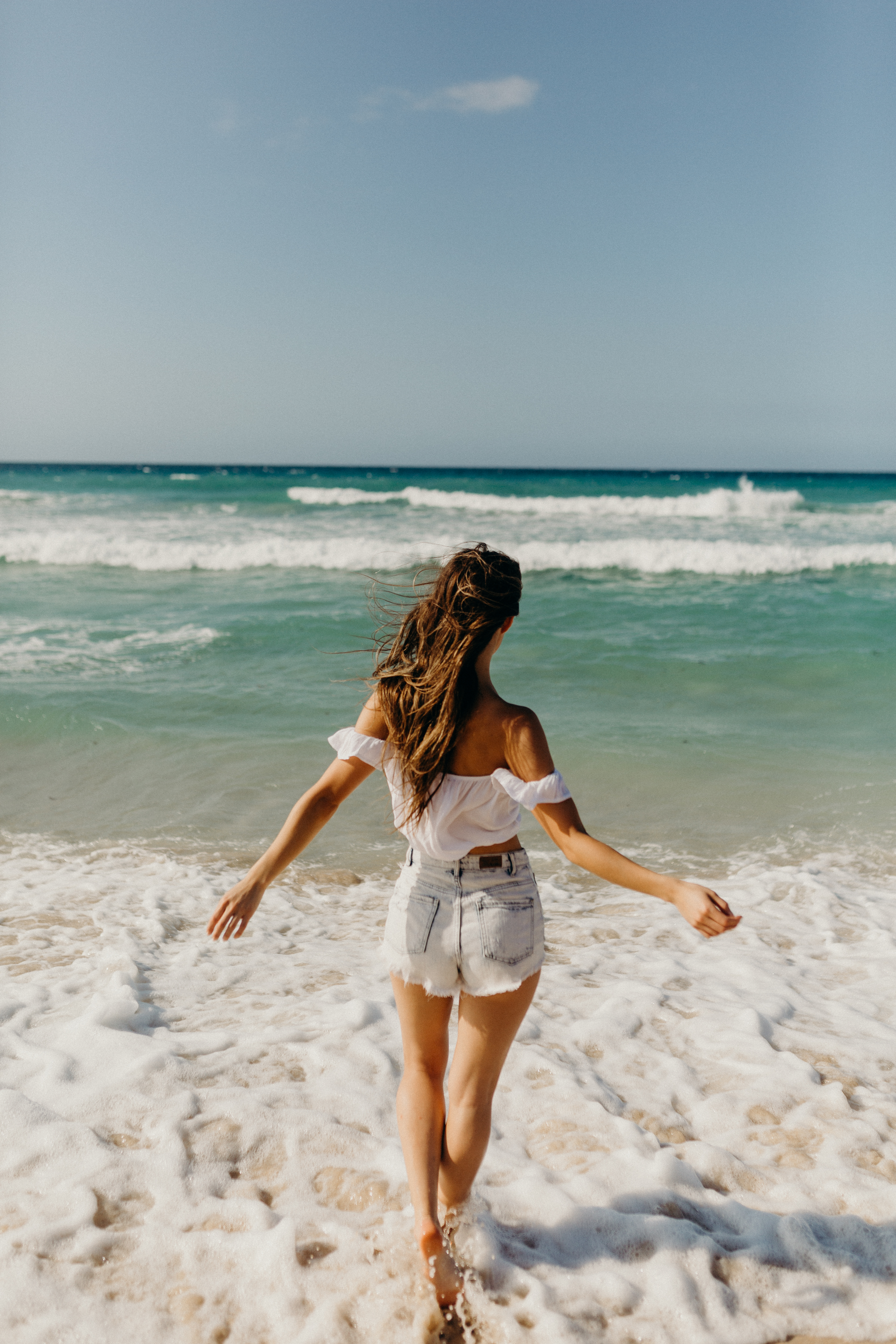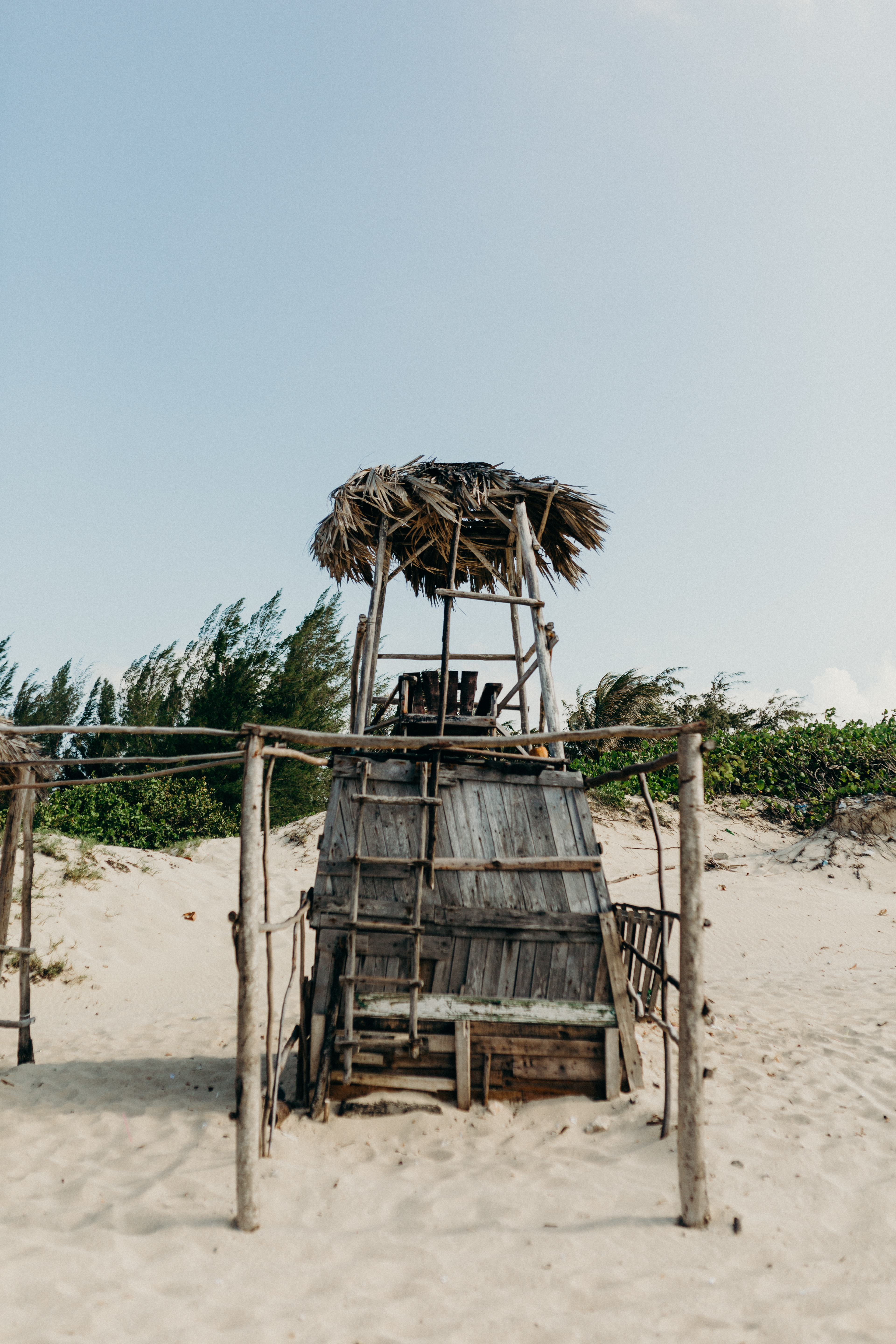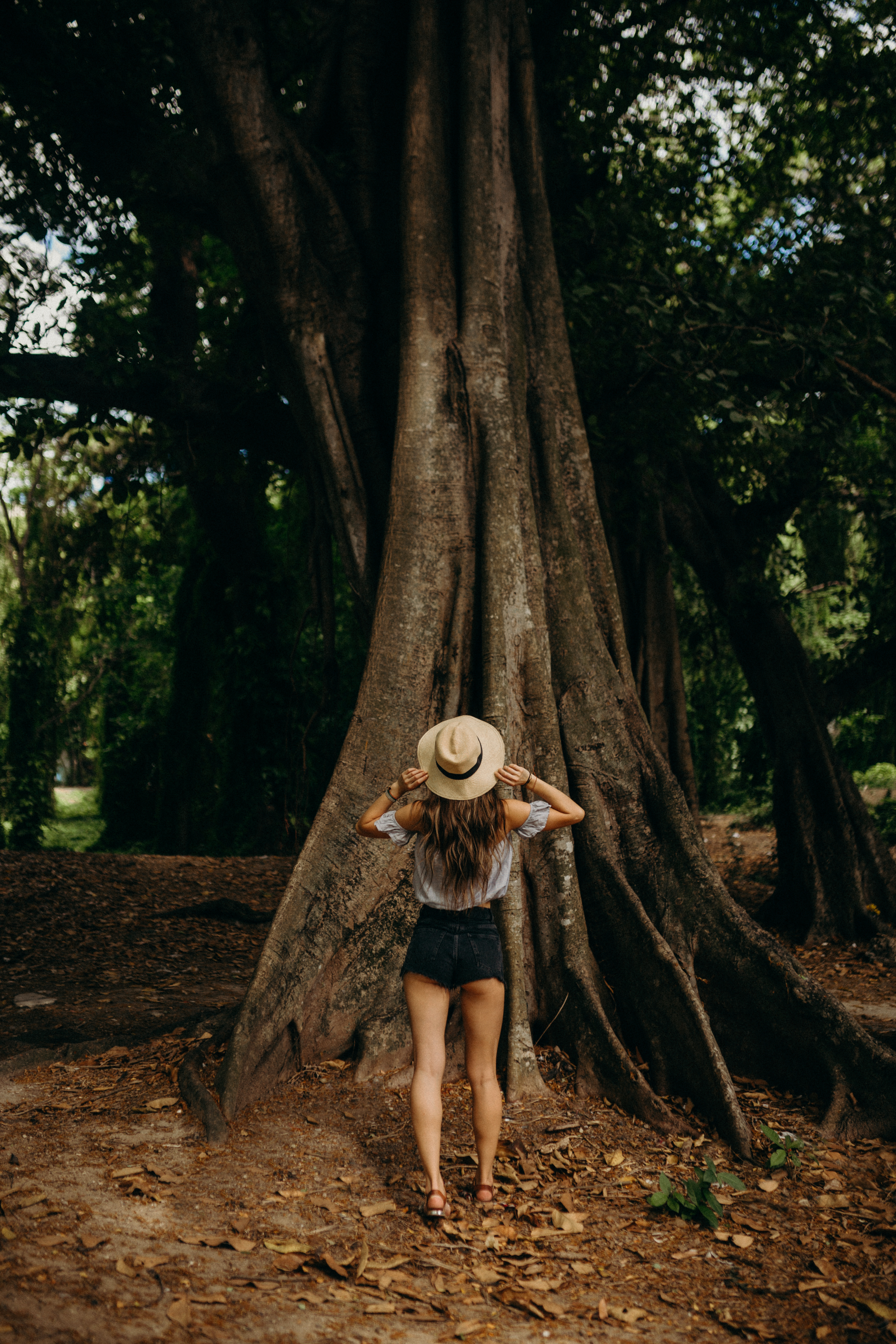Cuba, only 103 miles from the US, but until 2015 American’s didn’t have the opportunity to visit this frozen-in-time caribbean country. So when I found out that Alaska Airlines was sending me in a crew of photographers/influencers to explore, I was beyond excited. How few people can say that they have experienced this place! I quickly discovered as the group’s trip planner, that even now that the travel ban is lifted, getting there and navigating can be quite daunting for Americans. The paperwork and rules weren’t that extensive, but the info on said paperwork was more evasive than I’ve encountered when researching any of the other 24 countries I have visited. So to help all you Cuba-bound Americans, below is a list of all the current regulations, costs, and my tips for planning a trip to the colorful country.
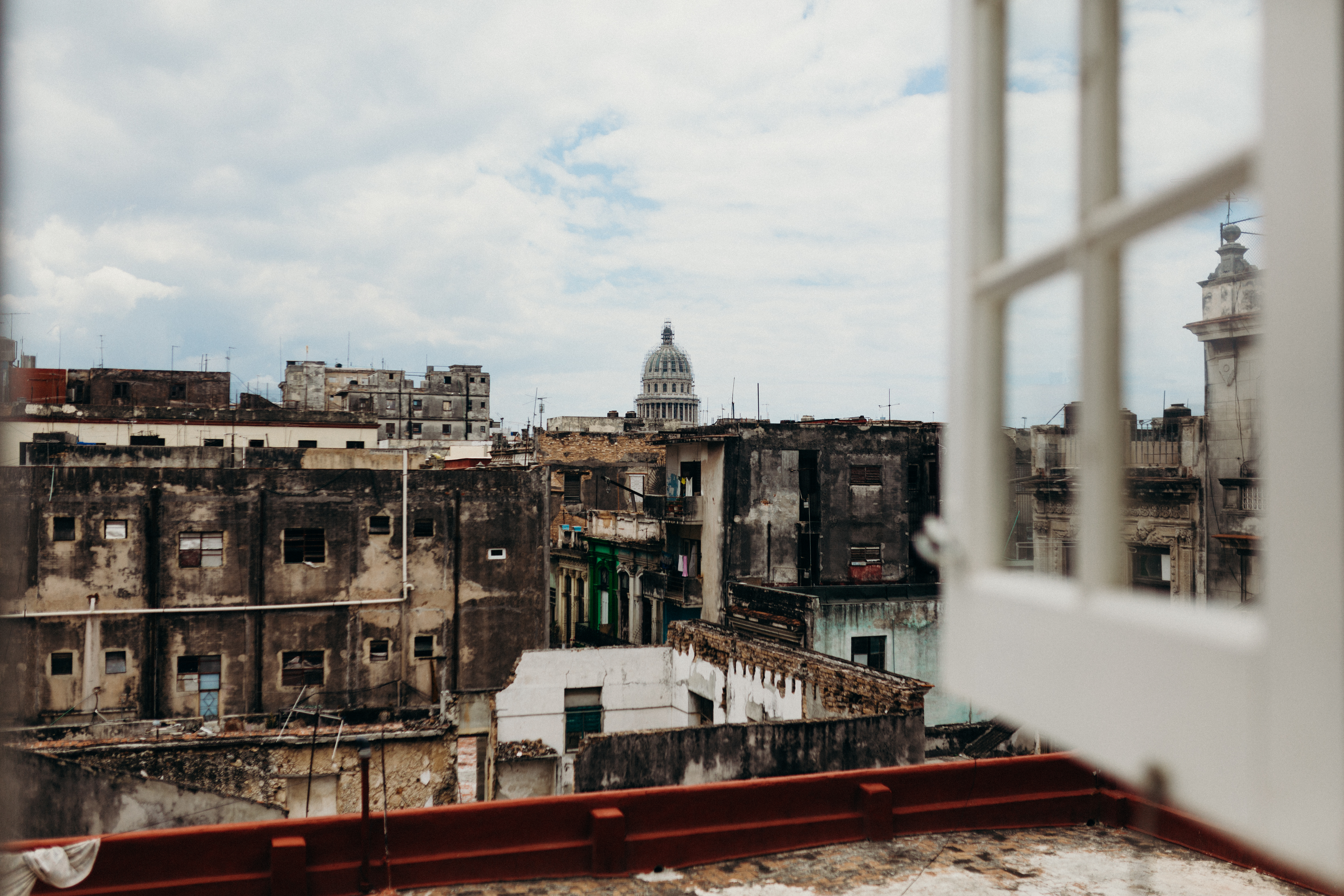
Getting there Insurance, Visas, and Travel :
Like I mentioned above, there is a bit of paperwork to go through to get to Cuba. You of course need your passport, just like any other trips out of America. Then beyond that, you will legally need travel insurance & a visa. Your travel insurance will need to be purchased at lease a few days ahead of time to be valid at your date of travel. If you’re like me, you don’t often buy traveler’s insurance. I usually just purchase flight insurance. The only acceptation for myself would be if I decided to go somewhere known for viruses, or if I decided to be doing something like mountain-climbing. This can of course vary per traveler’s comfortability. However, it is a legal necessity for an American going to Cuba to have the basic travel health coverage required for their specific home state. I would 100% recommend www.insuremytrip.com. I gave them a call and they had everything handled for me in under 10 minutes. They sent me a link where I purchased my insurance for only $15. Make sure to click the link the same day you receive it, or it expires. Once you purchase, print out the confirmation and make sure to take that with you to Cuba. For my trip nobody looked for my insurance, but I had heard from other travelers that they screened for it hardcore. I would just get it, it’s technically legally necessary and only $15.
Next up: Visa. Your visa can be acquired at the airport when you check in for your flight. The idea of this stressed me out beyond belief, because without a valid visa, you cannot enter Cuba. If you know me at all I’m a bit type A, and I didn’t like the idea of waiting to buy the visa until the day of departure. I had found websites during my planning that sold you a visa for $150-$300, but they all seemed a bit sketchy to me. They may not be, I just ended up calling the LAX airport and inquiring about purchasing the visa at our gate. They assured me that the kiosk with Cuban visas was always open any time that there was a flight going to Cuba. They indeed were. They are right beside the checked bag area with Alaska Airlines. You just walk up to the kiosk and tell them you need a visa and you can buy it right there with cash or card for $100. Fill this out and keep it and your insurance with your passport at all times. The process of when they check for these items seemed very un-orderly to me, but it could be due to the evolving nature of travel to Cuba. They did check for my visa when entering the plane, when entering Cuba, and also when exiting Cuba.
There are 12 Categories of approved US travel to Cuba. This is still the case, but the new rules under Trump only allow 10 out of the 12 categories of authorized travel for independent travelers. When filling out your visa, as an American, you will have to select your reason for travel to Cuba out of the list of 12. This is by far was the most confusing part to me when trying to coordinate our travel plans. How did I know if my reason was valid? How do I prove it? Which one is the right reason to select? In previous years you could only go if you had family there or you were a journalist. Even though we were a group of photographers traveling with Alaska Airlines, we wanted to travel with Visas that other travelers may use, to show that the opportunity for everyone is available. The 12 options are: family travel, official government business, journalistic activity, professional research, educational activities, religious activities, public performances, support for the Cuban people, Humanitarian projects, activities of private foundations, exportation/importation of informational materials, and authorized export. Each member of my group selected 3 of the 12 options, which you can see in the list as bolded selections. These options will remain the same as the regulations change, you just can’t travel individually with the Educational or Support selections. As long as you are doing pre-organized group tours, this counts as a ‘people to people’ experience for group education. If your tour company schedules you to stay with local Casas, that is part of Support for the Cuban people. You can also volunteer for some awesome experience and to fulfill the Humanitarian option. (Do keep in mind, you have to have these things booked by a legal company, and your lodging and activities must be pre-approved). When you fill out your visa at the airport, you just select 1 of the reasons for your travel, and you should have some way to prove it. For instance, you will need your itinerary from your tour group to show what all is planned and to prove that it has been pre-booked, legal, and falling under one of the 12 categories of travel. Traveling to Cuba without plans at the time we went was definitely doable, as you could just show up in Vinales and book a tobacco tour, or show up in Trinidad and find an open Casa just by knocking on doors of houses that have a blue anchor on them. Nobody looked at our agenda to verify we had plans, however, that was loosely the legal requirement, and once the new regulations under Trump are in effect, this will be an extremely monitored and regulated process. So of course plan as you like, and if you are really against having full guided tours, just make sure to get there before the new rules are in effect!
As I understand it, there used to be an exit fee of 25CUC (this is Cuban travel currency, we will get to this below). But for us they did not require it, and after doing some post trip research, it appears they no longer require an exit fee, it is covered in your airline purchase.
Lastly, for air travel, I would highly recommend getting to Cuba on Alaska Airlines. They made the trip extremely smooth. I may be bias being from Alaska, but they really are my favorite airline. Beyond my own preferences, very few airlines go to Cuba right now, and it should be noted that Alaska airlines is the only airline that flies from the West coast to Havana, Cuba.
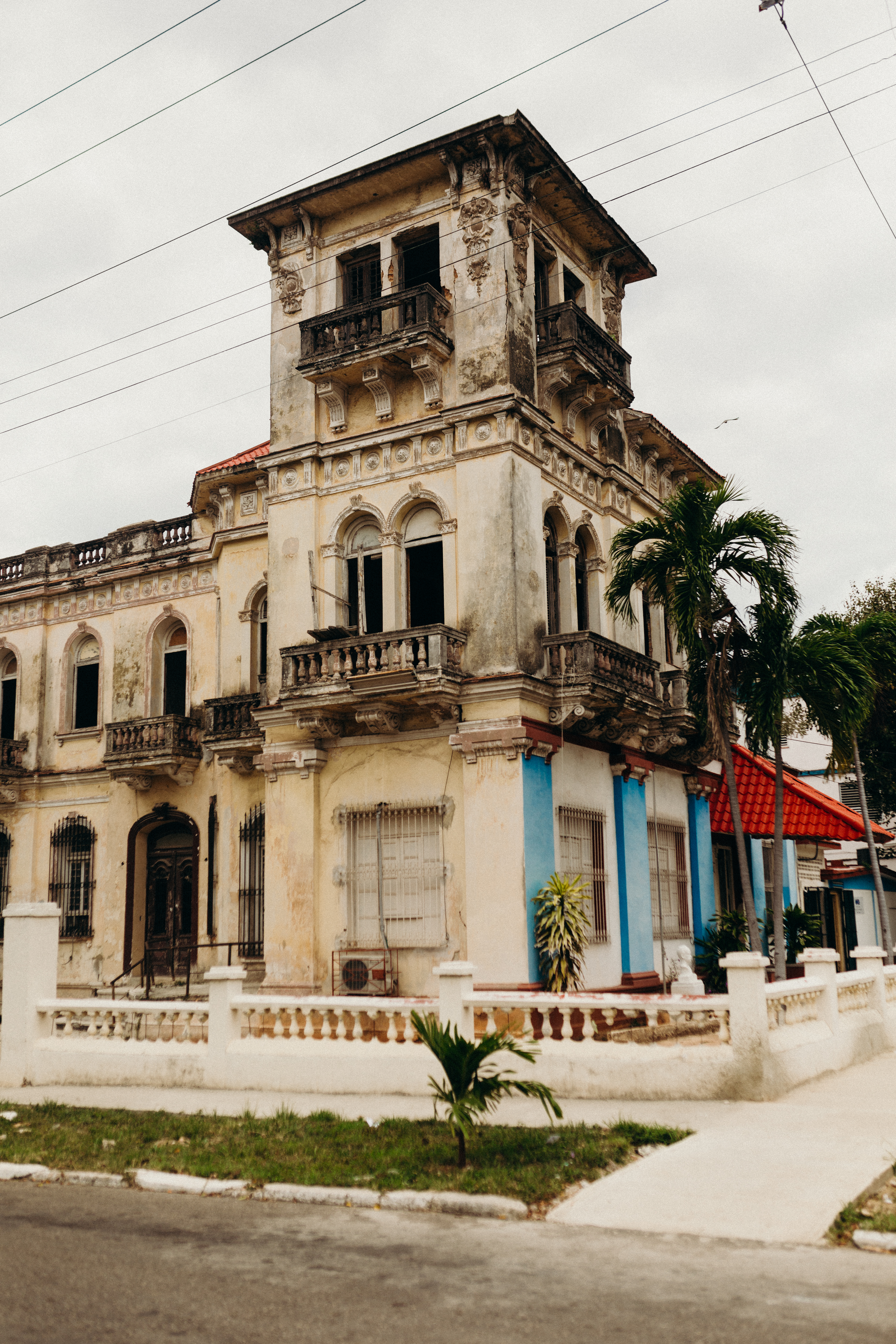
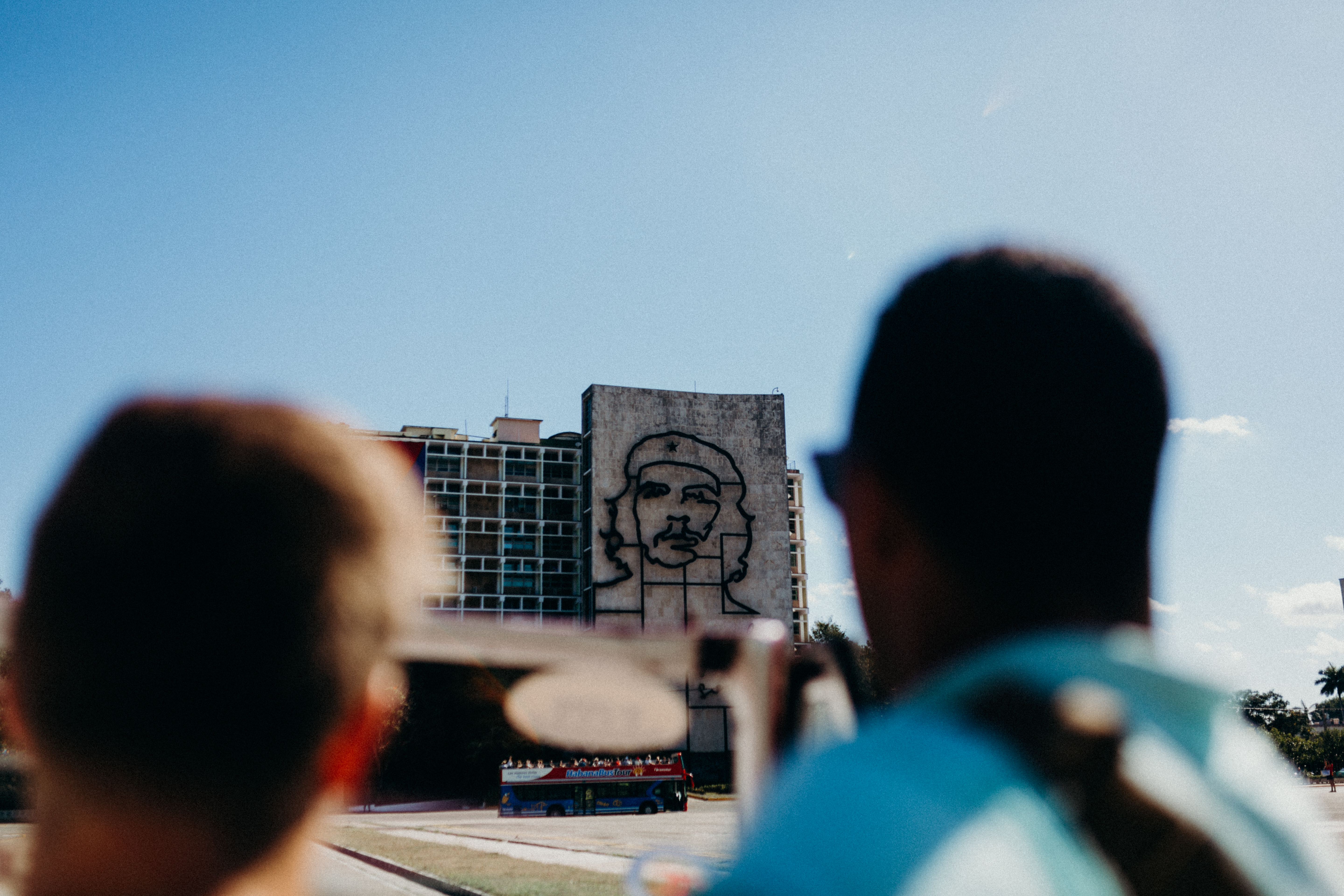
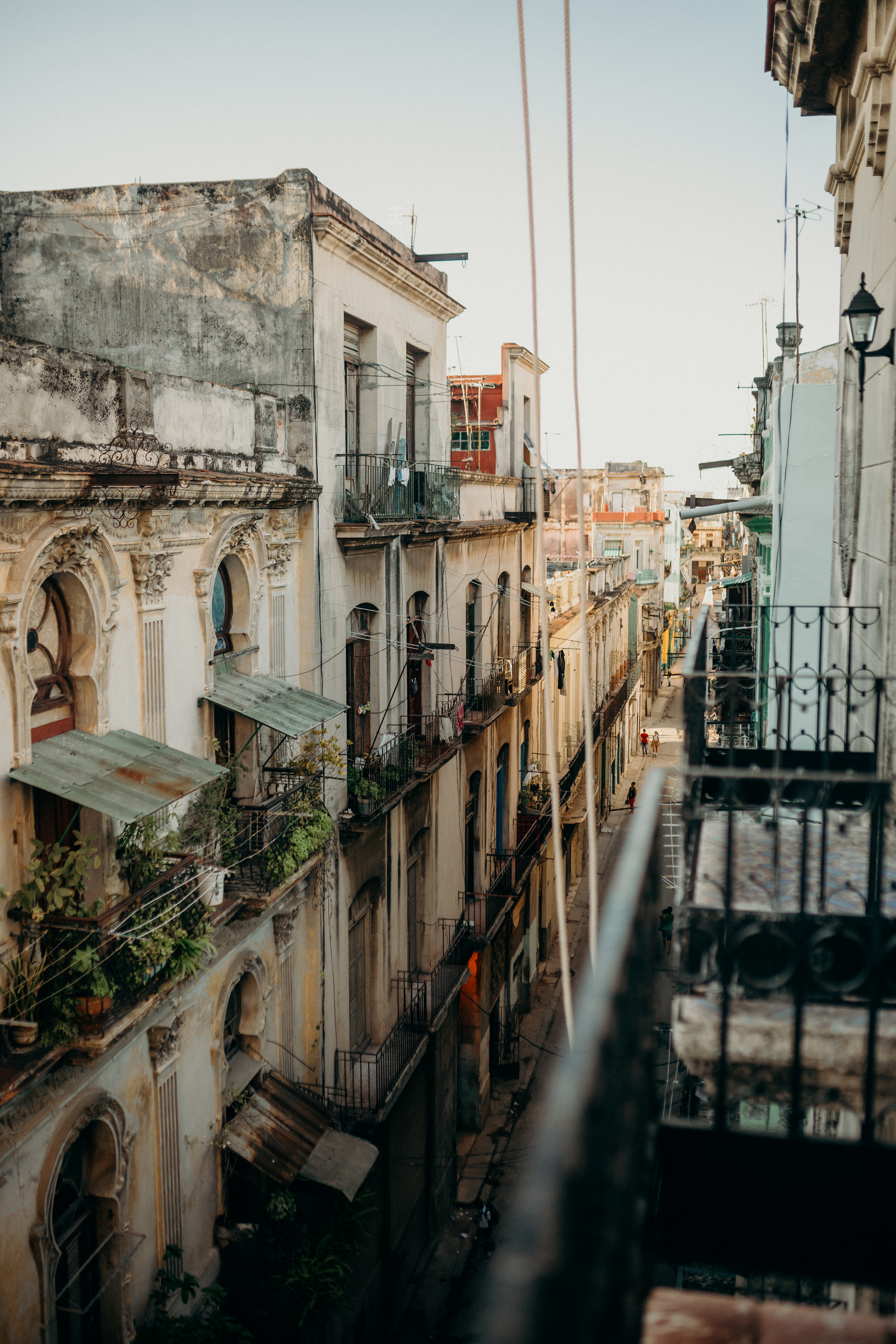
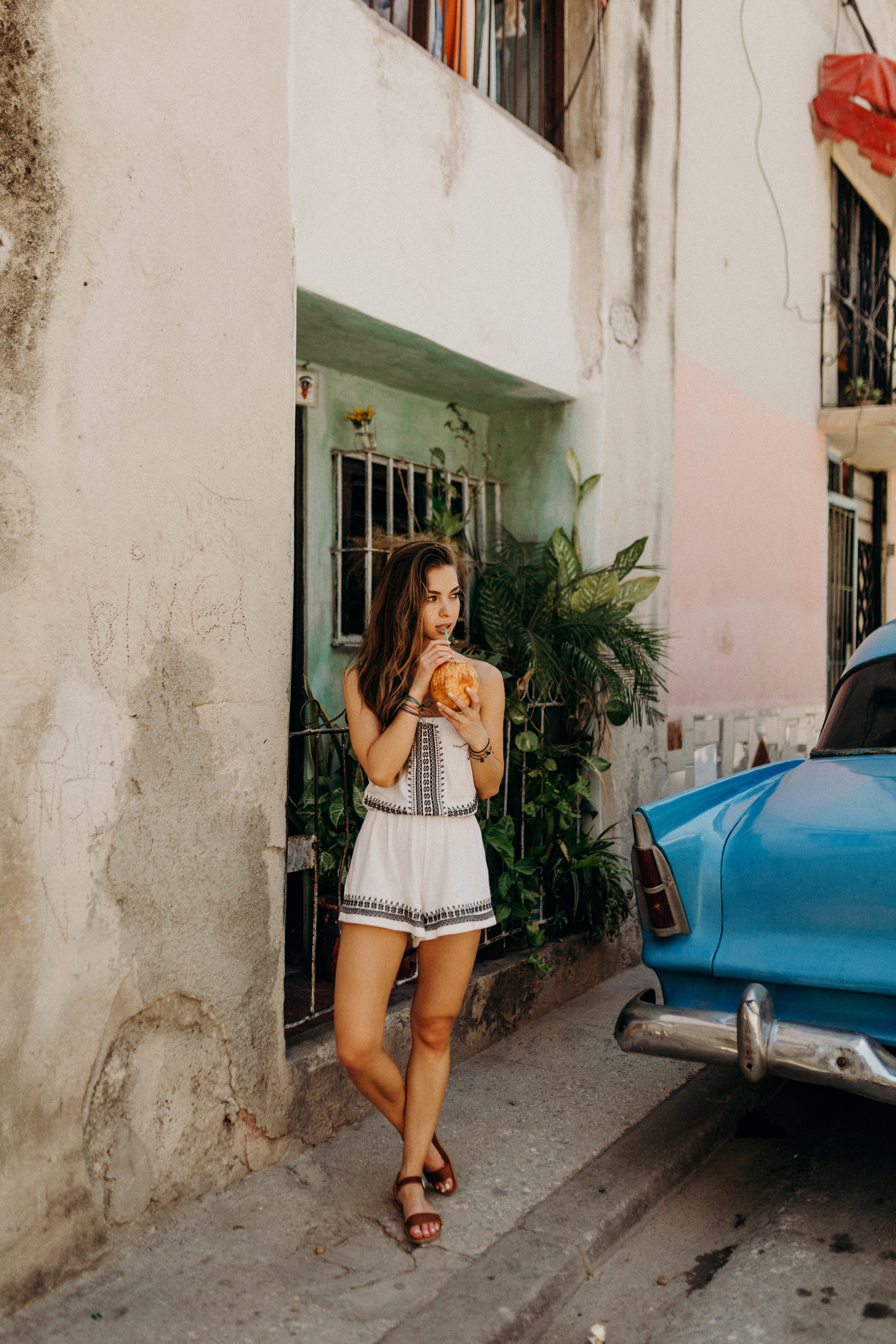
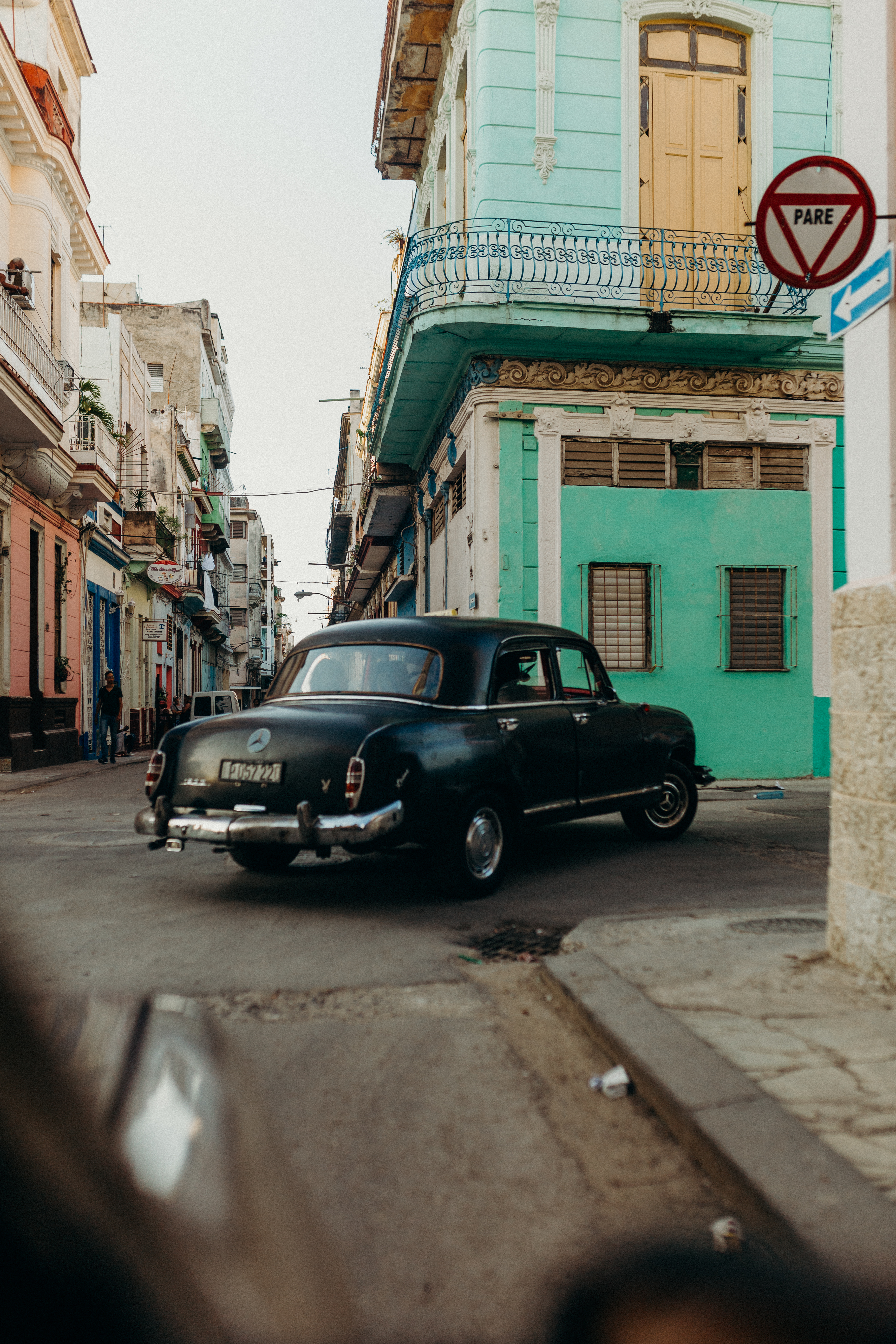


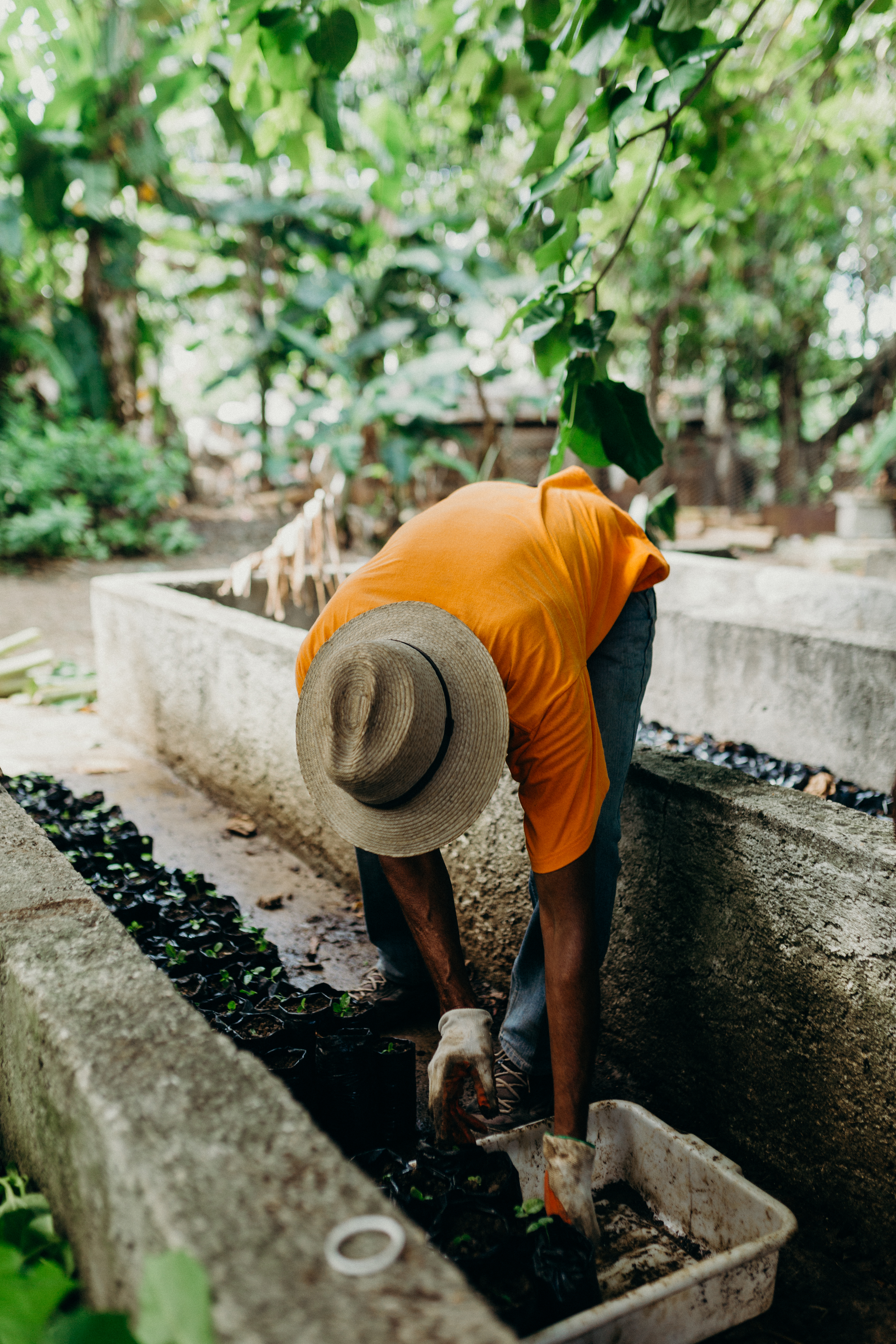
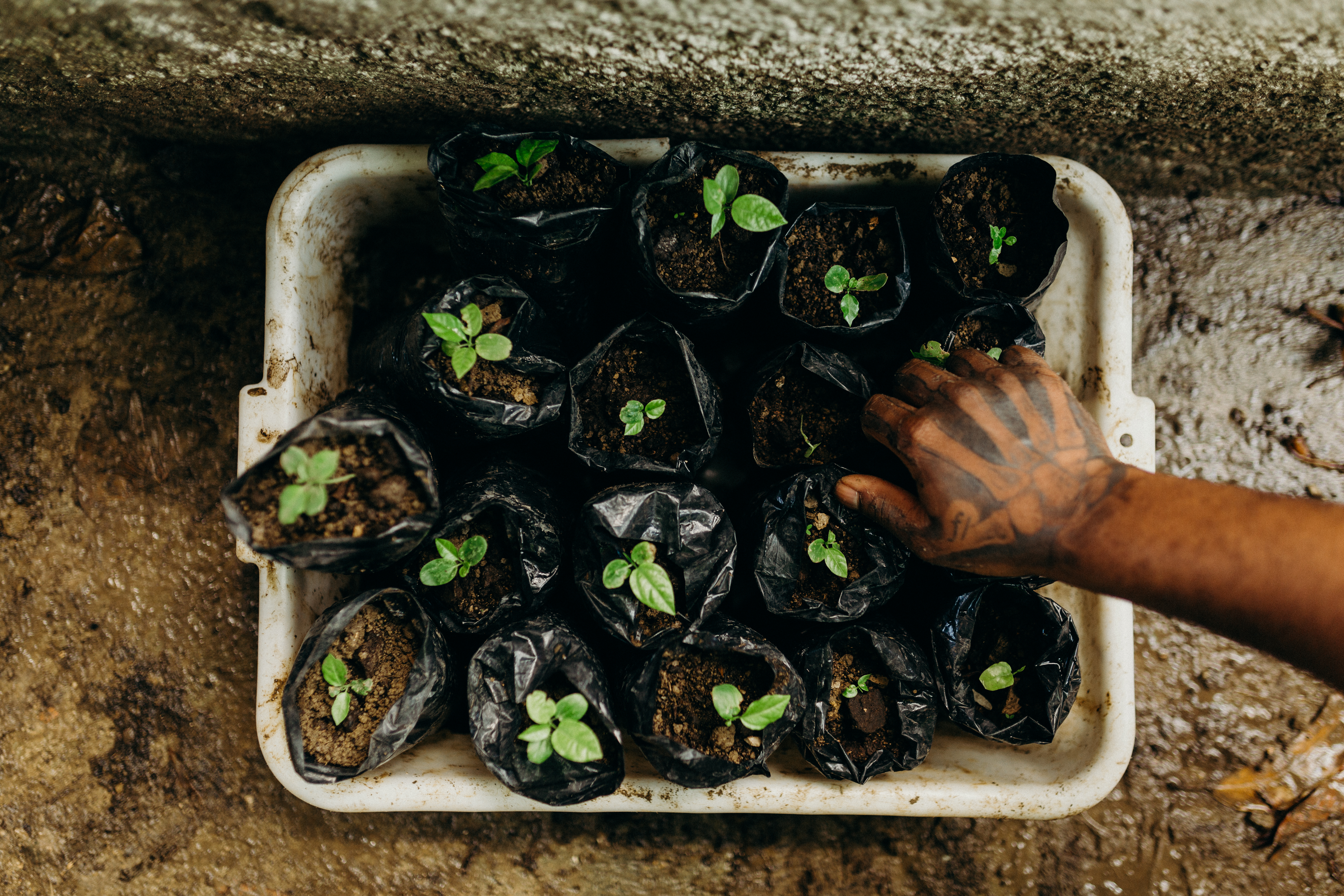
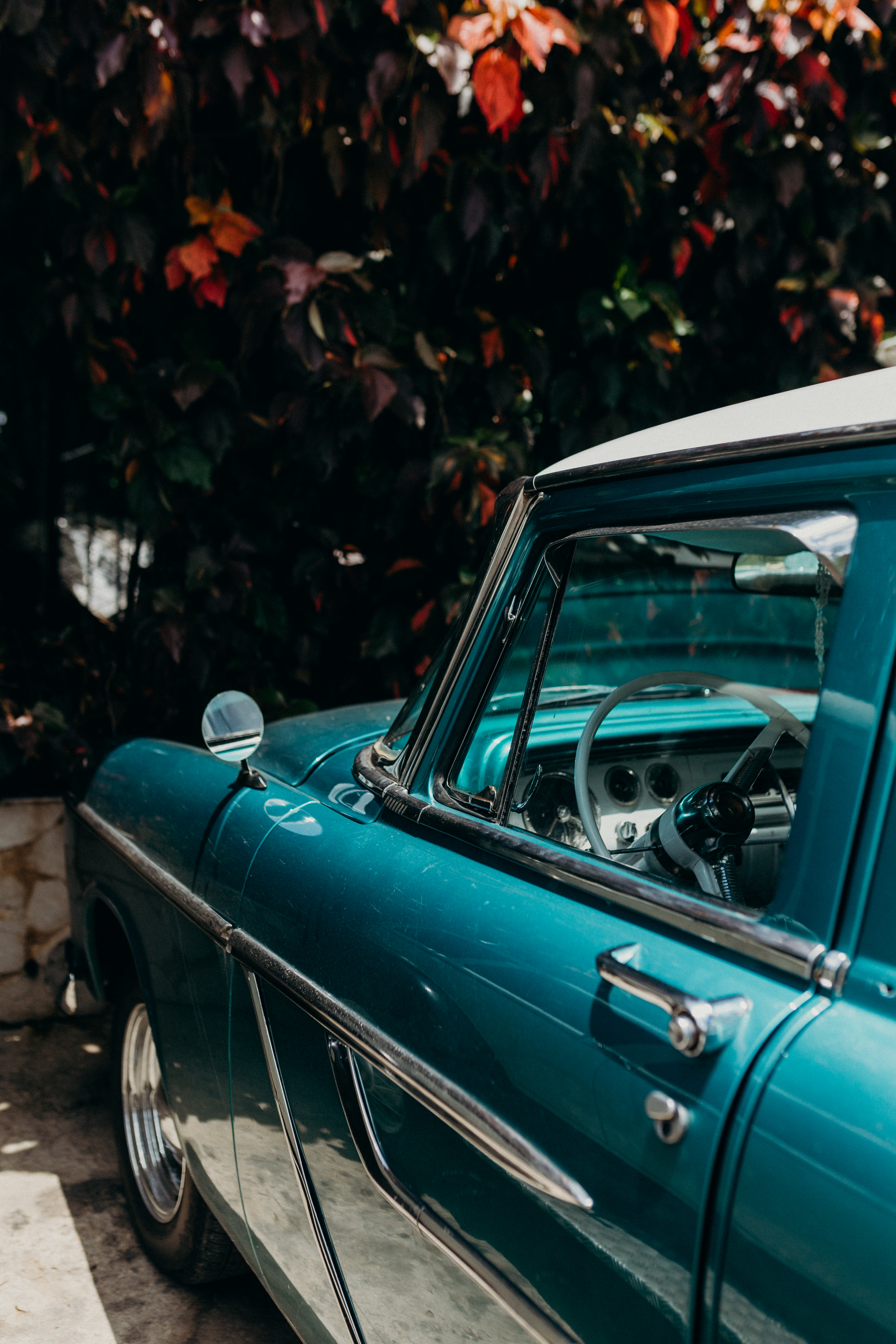
Money
Another difficulty with being American and going to Cuba is that you cannot use any debit or credit cards. Not even my trusty international travel cards. Though travel is allowed, money cannot be technically transferred between the two countries. Nothing works. Really. That being said, you have to take all cash. So having enough is pertinent. We booked our tours ahead of time (this will be discussed more below), so for our group’s spending money, we all budgeted $50 a day. In hindsight, I would say having closer to $75-$100 a day makes life more fun with trying drinks and buying souvenirs and paying for conversion rates.
Speaking of conversion rates: here is what you need to know with the Cuban money situation. You obviously cannot spend USD in Cuba, so you will need to trade your money for CUC (The cuban convertible peso). However, if you trade over your money in Cuba from USD, you lose a steep 13% of your money in trade conversions. Technically 1 USD = 1 CUC, but you will come out with only .87 CUC for every USD you trade. To get around this, you can trade your USD for Euros or CAD. Americans are the only ones with the steep trade percentage. So if you take $500 and trade that all to CAD at your departing airport, you will only pay a $10 fee or so for the transfer. Then once you are in Cuba, when you trade the CAD to CUC, you only lose 3% in conversion charges. Though a bit more time consuming, this method will save you about $50USD per $500USD you convert.
While in Cuba you will also come across CUP. This is the local Cuban currency. You cannot use this currency as a non-Cuban. If you go to a small market in a non-touristy area, they will try to give you change in CUP, so just double check what they’re giving you. When you look at a price in a restaurant, if something is 10CUC, that means it’s $10USD. However it would take 240CUP to add up to $10USD. We did come across a few shops that priced things ins CUP rather than CUC, but we still paid in CUC. In short, Cuba has two currencies, CUC and CUP. You will only ever pay with CUC, you can only convert to this currency, and will mainly only see pricing in this currency. You may however, occasionally see pricing in CUP if you’re in less touristy areas.
1 CUC = 1 USD = 24 CUP
ALSO! Be sure to trade any unused CUC back to USD before you leave Cuba. Once you leave the country with CUC, you cannot trade it back to USD.
Food
Everyone that I talked to prior to going to Cuba told me that at least one person in their group got a stomach bug. We simply can’t tolerate their water, and it often is hard to avoid it. Our group was very cautious of the water we consumed and where we ate, so none of us got sick! That said, here is my advice on food in Cuba:
– Take advantage of the food your casa offers. It is the cheapest and is delicious. The hosts also understand how to prepare things so that you don’t get sick. Some of our favorite meals were at host homes.
– Paladars are restaurants on rooftops that aren’t heavily advertised. They are usually just someone’s personal kitchen. The best paladars, especially in Havana, require a reservation. You should do this ahead of time. You can easily have you Casa host or someone at your hotel call in all your reservations for you. Our hosts were always happy to help.
– When in doubt and missing tastier foods, check trip advisor. When we had about had it with bland food, we would find a trip advisor place and this usually satiated what we had been craving in terms of spices and flavors.
– Stock up on water. You can carry water bottles all around and into restaurants and they don’t mind one bit. We ended up buying huge gallon jugs and keeping them in our cases to refill. If you’re out to eat and are thirsty, a small water bottle could cost upwards of $4!! You can buy whole gallons at a local market for $1.50. Those waters add up fast when you’re in extreme heat.
– A few of my absolute favorite places we ate:
La Guarita – (Havana) a crumbling old mansion with yummy food and good views if you happen to get a balcony seat.
California Cafe – (Havana) this is a bit more tourist friendly, which is great if you’re craving some yogurt and granola.
Cafe Arcangel – (Havana) delicious breakfast with many coffee and food options
El Del Frente – (Havana) really cute and modern bar/coffee
Cafe el escorial – (Havana old square) the best iced coffee in all of Cuba that I had
El Divino – (Havana) farm fresh food, amazing chicken fajita style and fresh fruit
Bar Paladar wakey wakey and shakey shakey – (Trinidad) good shredded beef traditional dinner.
– (Vinales) this view is STUNNING and the food is amazing and fresh from the farm.
 La Guarita
La Guarita 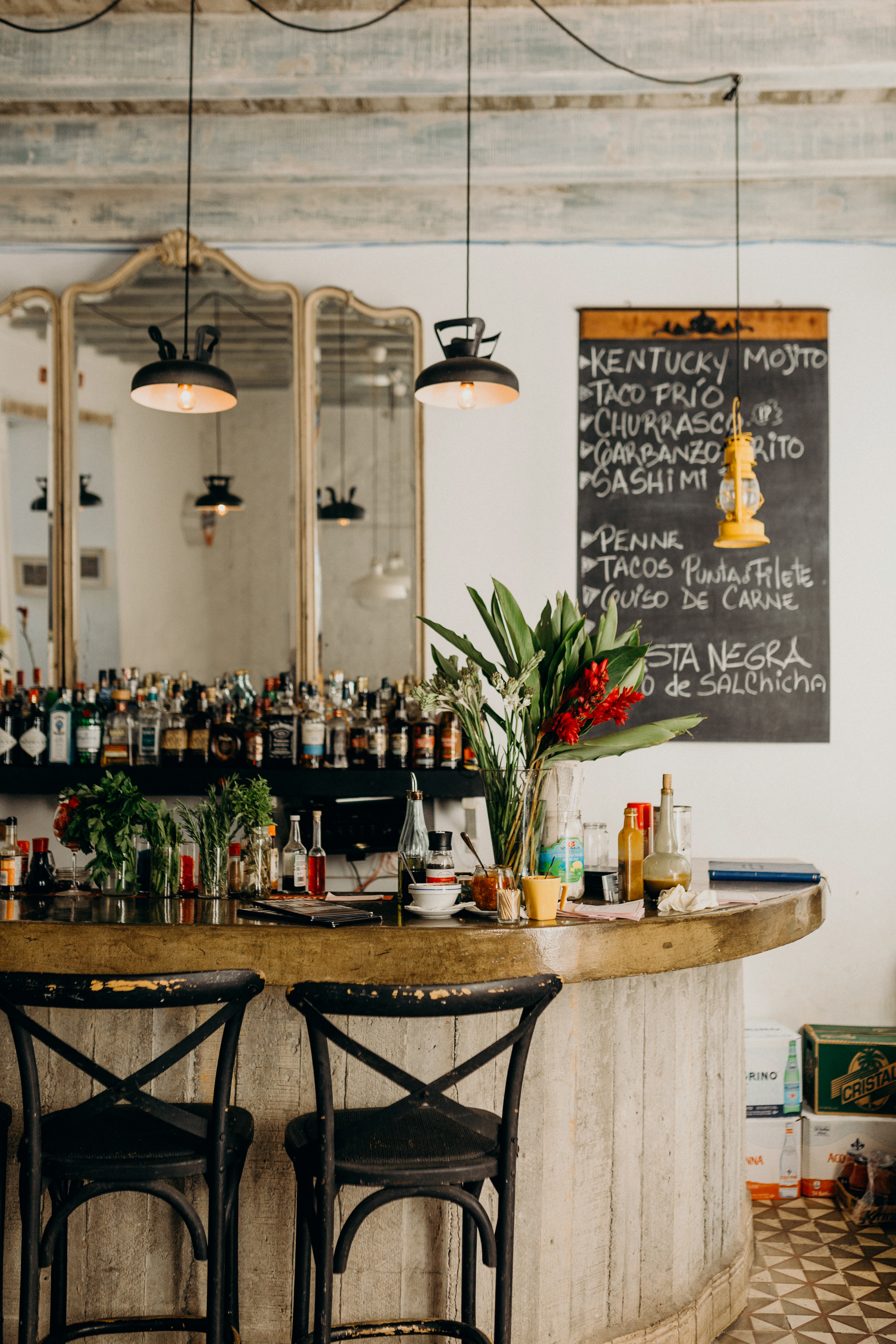 El Del Frente
El Del Frente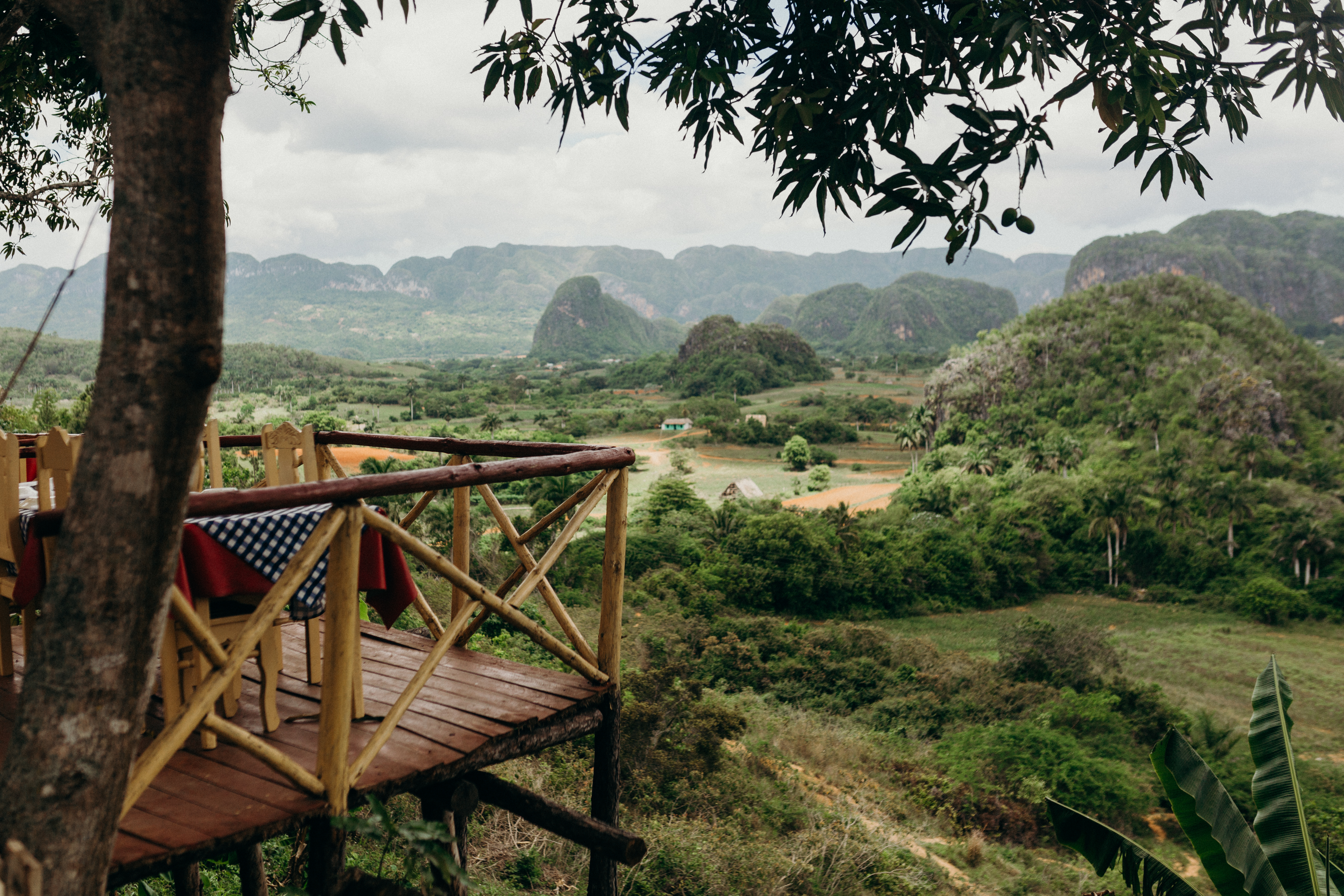 Balcon del Valley
Balcon del Valley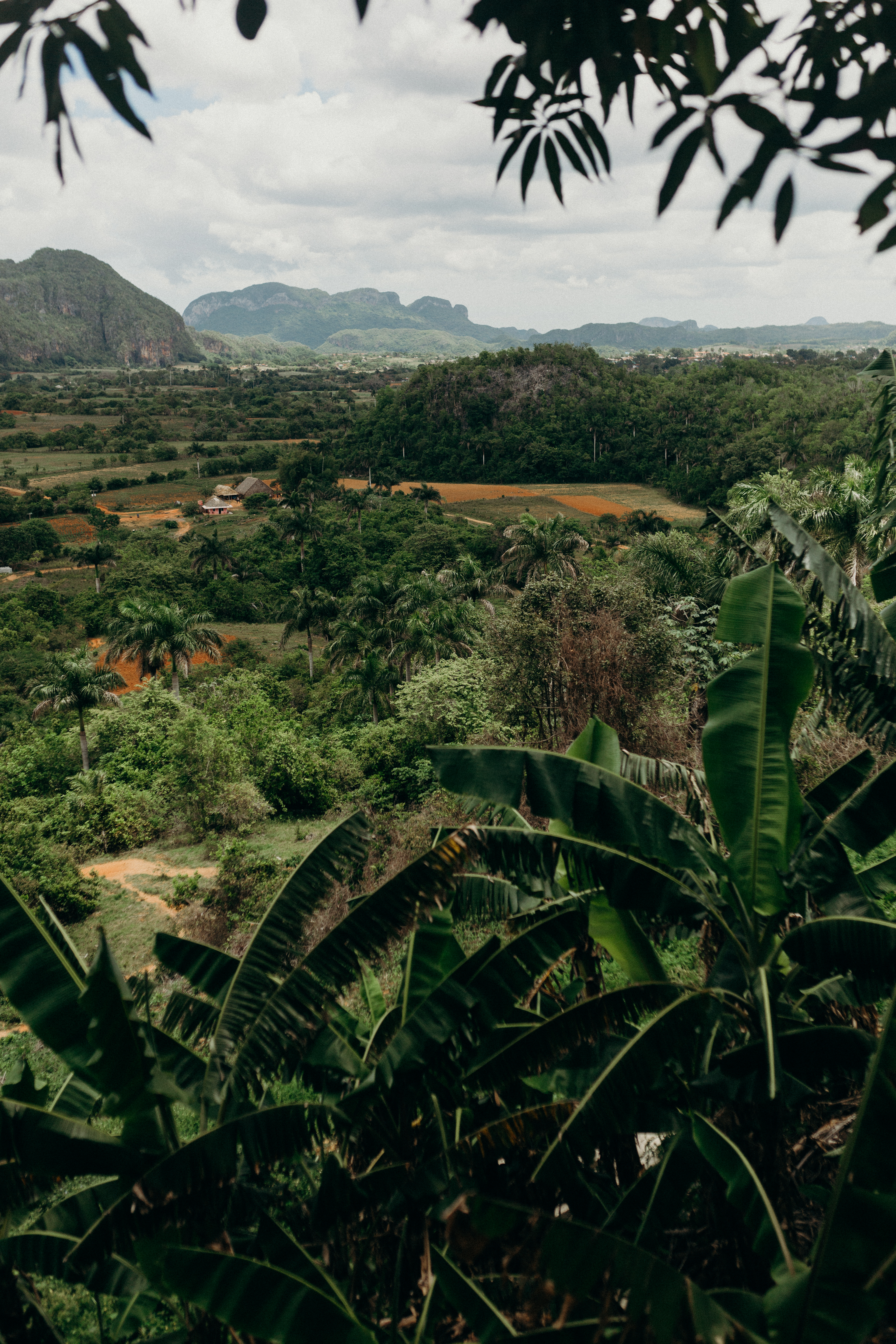
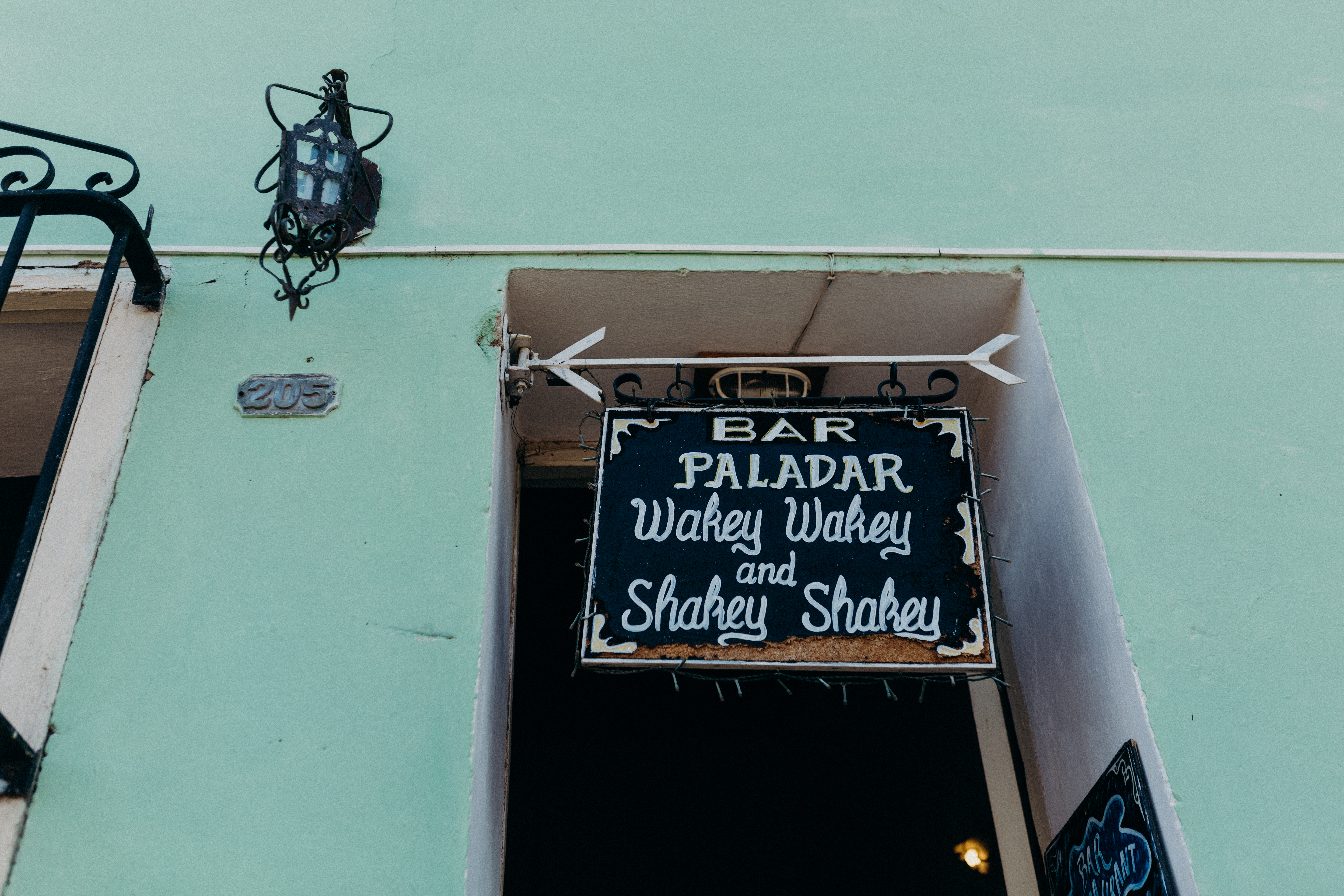 Bar Paladar wakey wakey and shakey shakey
Bar Paladar wakey wakey and shakey shakey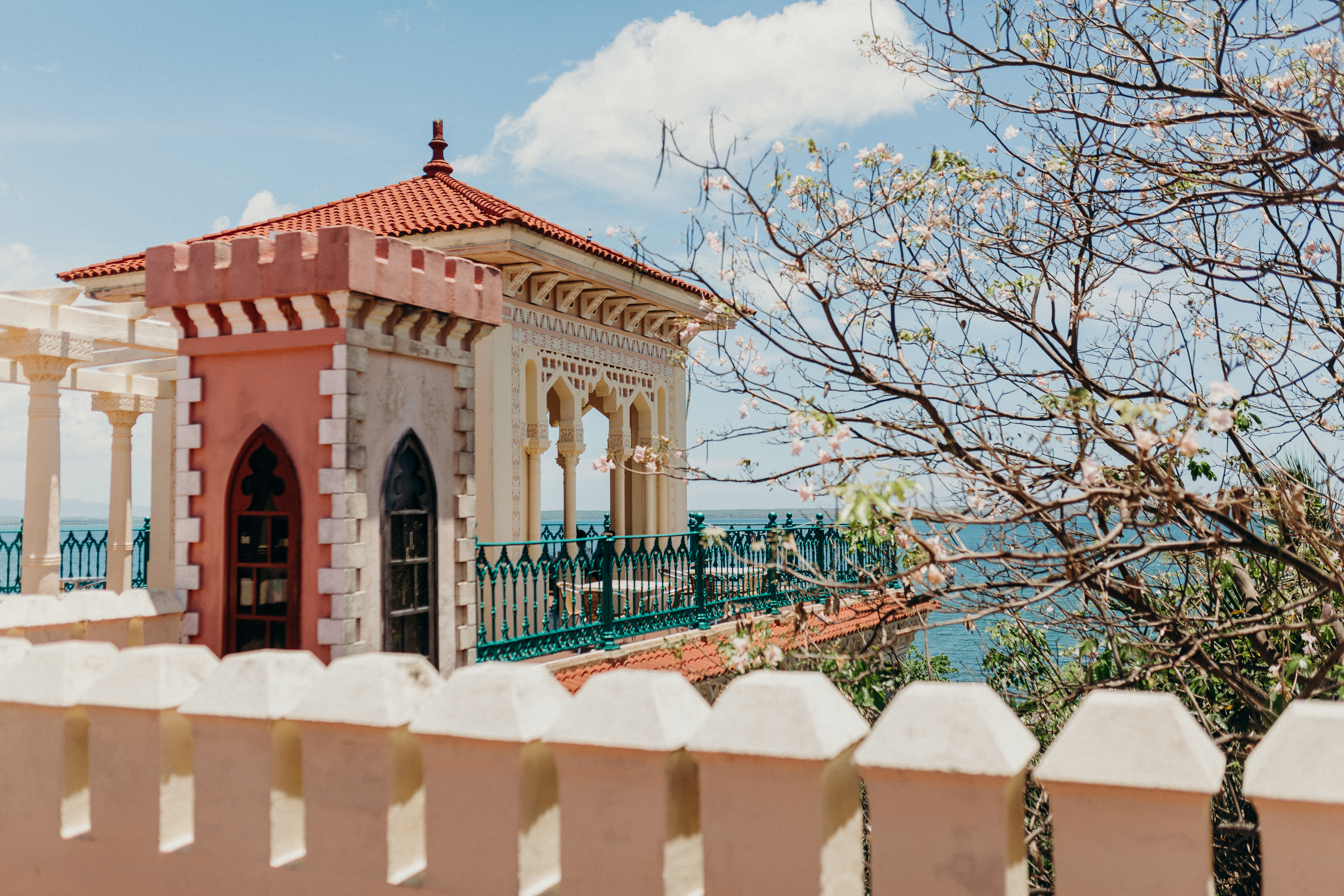
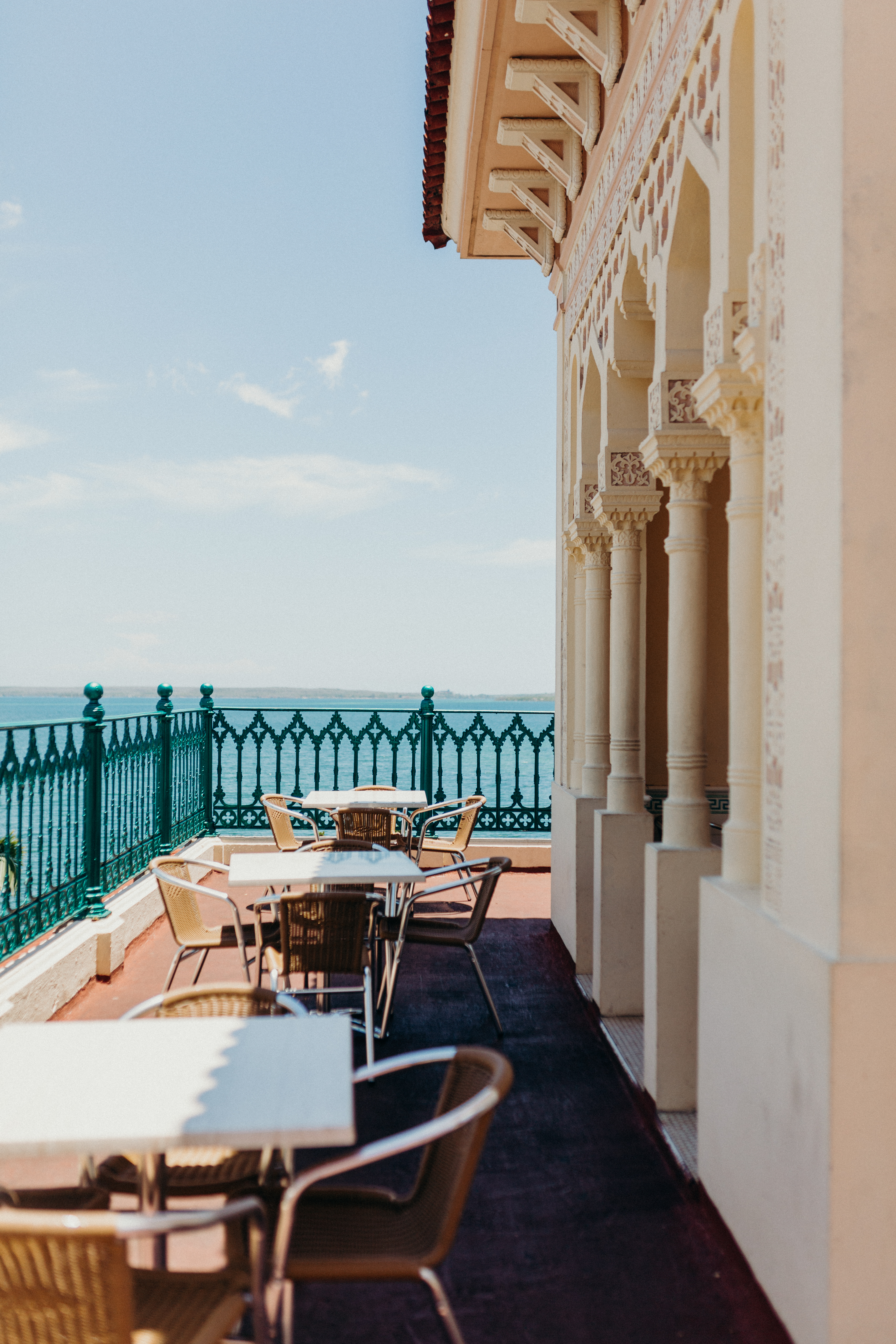 A bar on top of an old royal home in Trinidad
A bar on top of an old royal home in Trinidad
Internet
Oh man. The internet. This was the bane of our existence. Because we were working on our trip, we had obligations to be posting online about the trip, but the wifi was not an easy thing to work with. It is definitely possible to get wifi, but sometimes it simply won’t work. In order to get wifi you have to connect your wifi at a internet park. This is quite literally an outdoor park that just has a hotspot. Occasionally a hotel would have a hotspot, but generally speaking the fastest wifi we came across, enough to make a quick Skype call, was in a park. Also at the airport there is some great wifi. To get connected to the hotspot you have to buy a ETECSA prepaid wifi card. Stores sell them, as do hotels for around $2-$3 and the card lasts for an hour. You can buy them also at an internet park from a local for anywhere from $3-$5. Once you have the card, you scratch off a username and password to input once you connect to the hotspot. Be ware, you must disconnect from the internet once you’re done, or your hour will continue to run. We did come across a card for 5 hours of use for $7 on one of our last days, at a wifi special kiosk on a street. This was the only one of its kind that we saw however.
Lodging
As part of your trip qualifying as a people to people trip, or help for the Cuban people, Casas and AirBnbs are a great option. If you are searching for a traditional Casa Particulares, you can go to http://bestcubaguide.com to locate some very interesting and traditional options. They are very helpful and kind, they just usually take up to two days to reply. Now with the new rules though, you will have to have your tour company book these for you, just be sure to ask for specific room arrangements and for AC. Lastly, the wonderful AirBnb site can open the options up for homestays! We did stay at one that was very dirty, very hot, and not at all worth the money. However with new regulations requiring your tour company to book for you, I’m sure that the bad experiences will be far less frequent. There were some AirBnbs that we stayed at that I couldn’t say enough amazing things about. They were there at any moment we needed anything, everything was clean and comfortable, and we got a traditional experience in some.
https://www.airbnb.com/rooms/
https://www.airbnb.com/rooms/
https://www.airbnb.com/rooms/
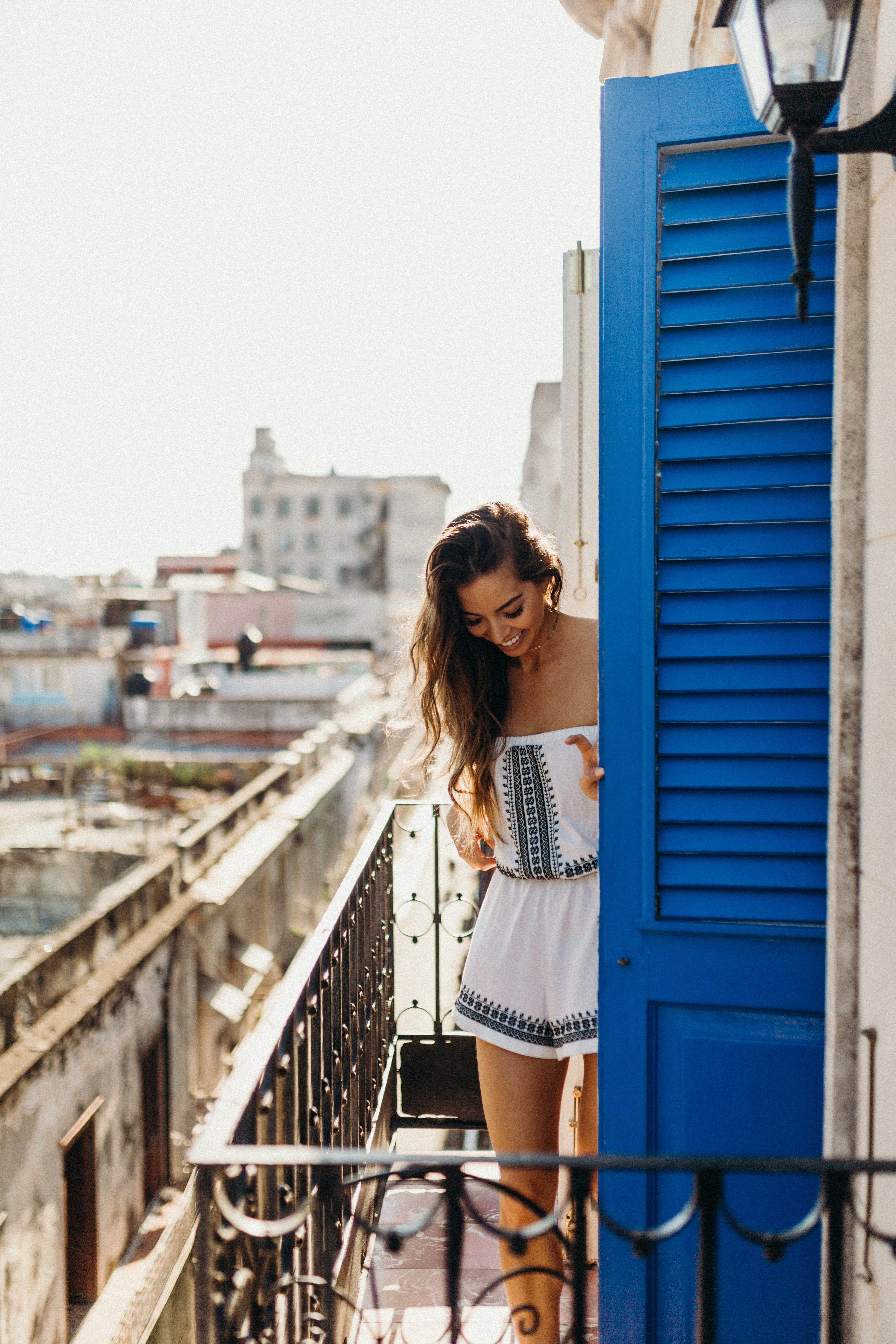
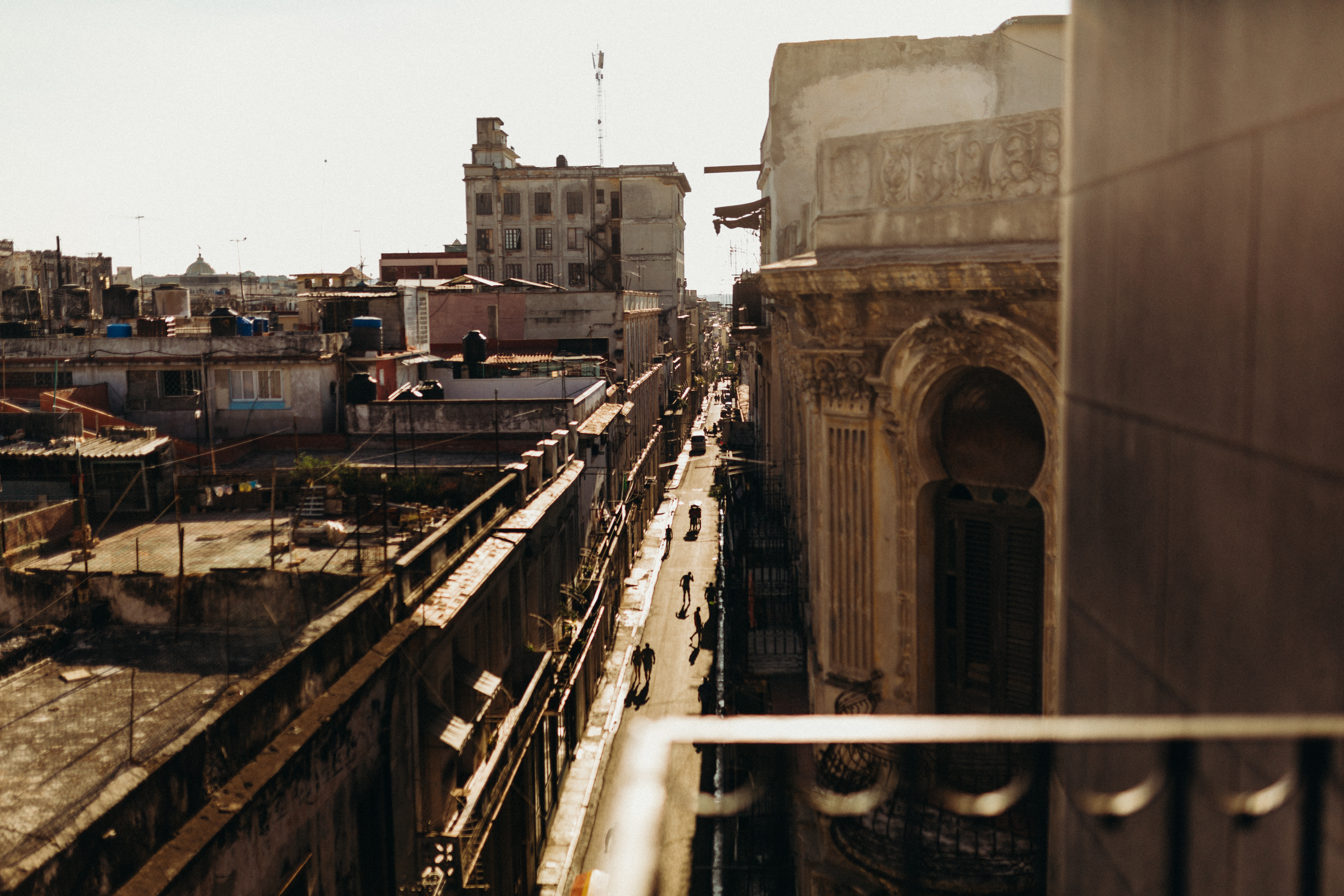
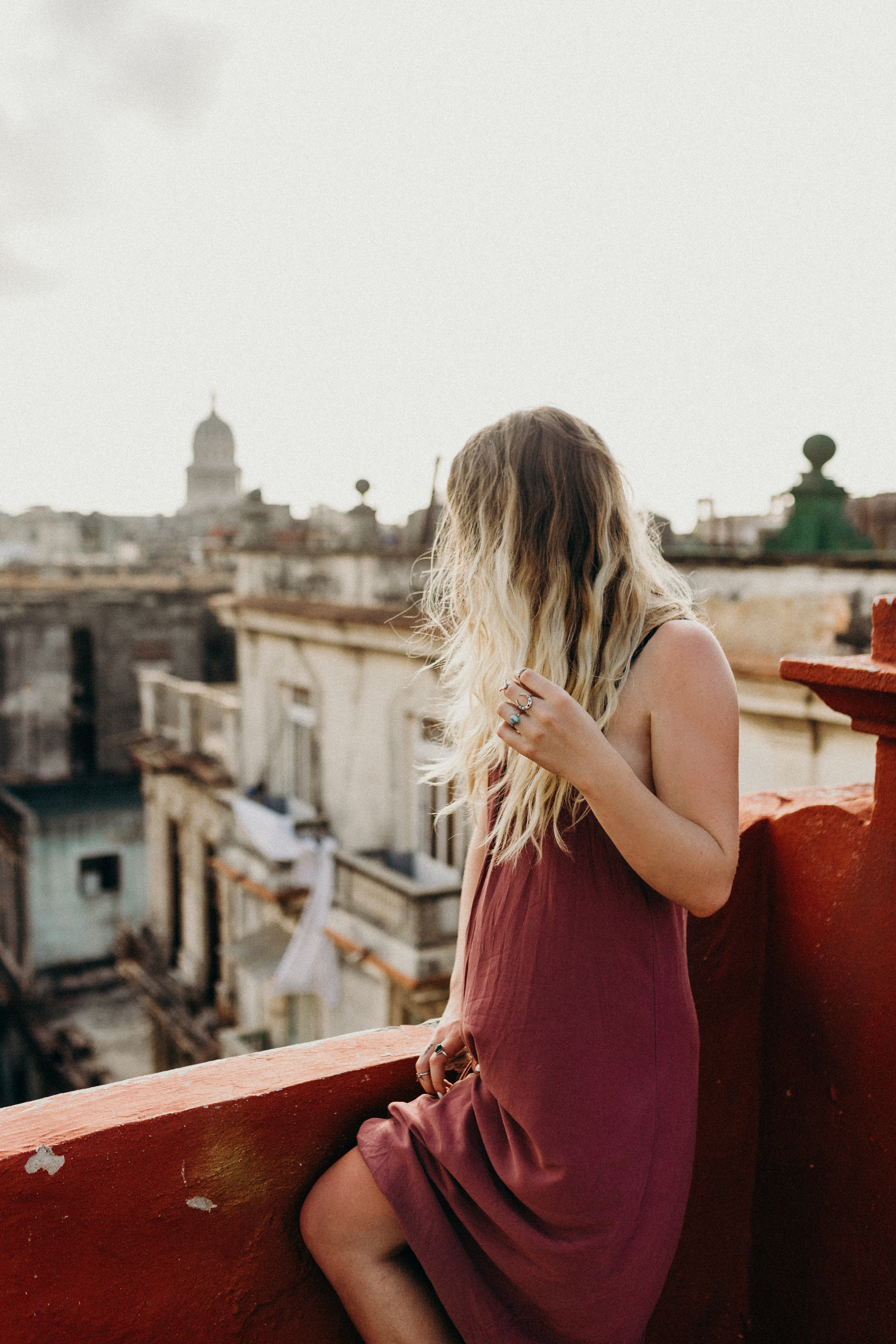


Tipping & Gifts
Tipping is somewhat expected in Cuba, just like America. Some restaurants do add in gratuity sometimes, so no need to tip on top of that. But if it isn’t added, 10% is sufficient. For cabs 1-3CUC is enough, but if your driver is with you all day and is professional and does a great job, definitely bring the tip up to 10-15CUC. Tour guides just depend on how well they did. We tipped our guide from InTouch about 15CUC a day, because we were on a group budget, but we wish we could have given him more. He was beyond helpful, and if you divided that by the number of people in the group, it is still only a few dollars a day. But our second guide was no where near as personable and it felt a lot like a money exchange, so we only tipped him 5CUC a day. Regardless of how you tip, do it discretely. As I understand it, that is just polite. Also, when staying at a Casa you really enjoy, bringing a little gift is very welcomed. We brought Alaskan Artisanal chocolates for our homestays, and every single person was beyond excited to receive the gift. A lot of the Casas went above and beyond anything I expected, making us comfortable and feeling like family, so giving a few chocolates was the least we could do.
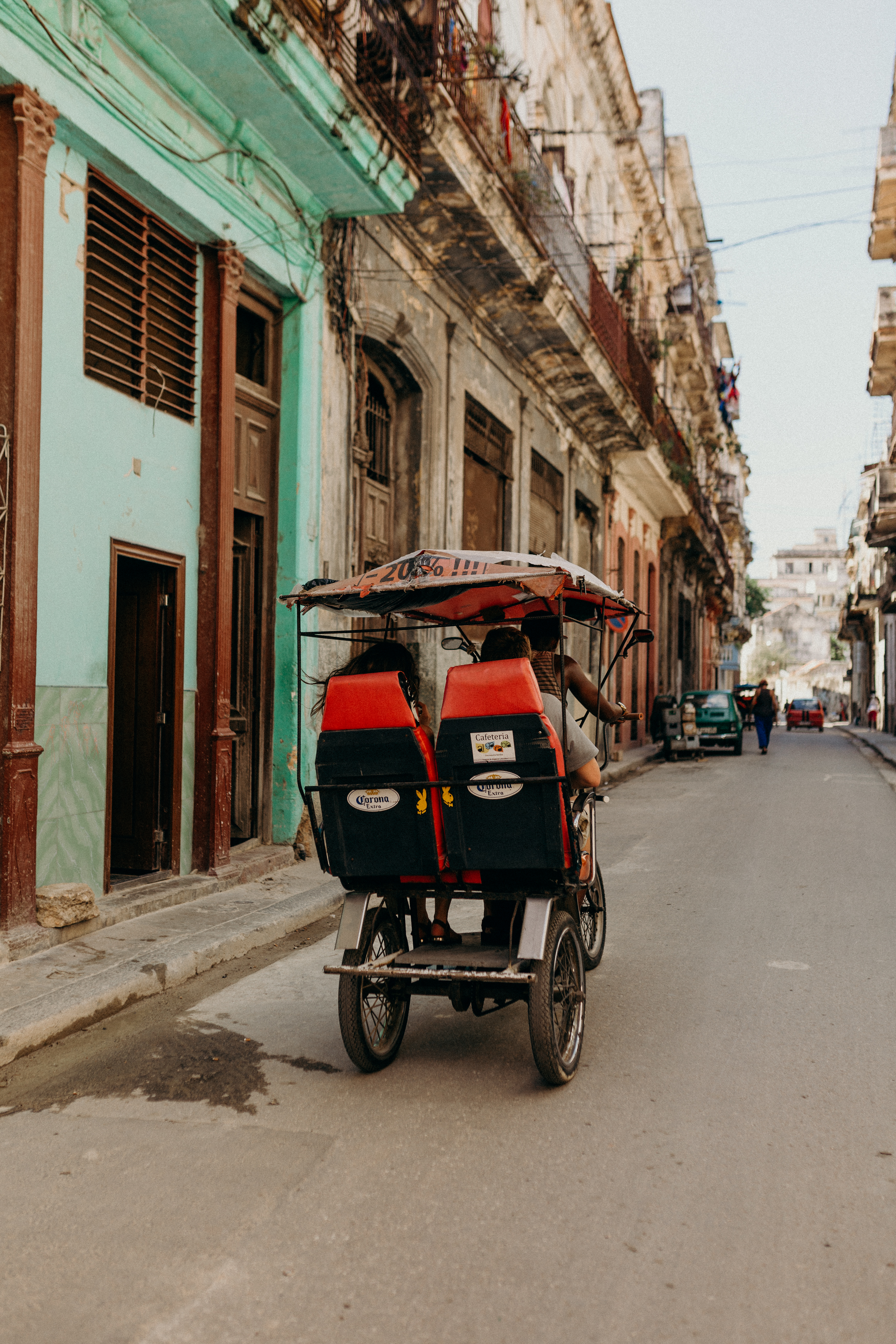
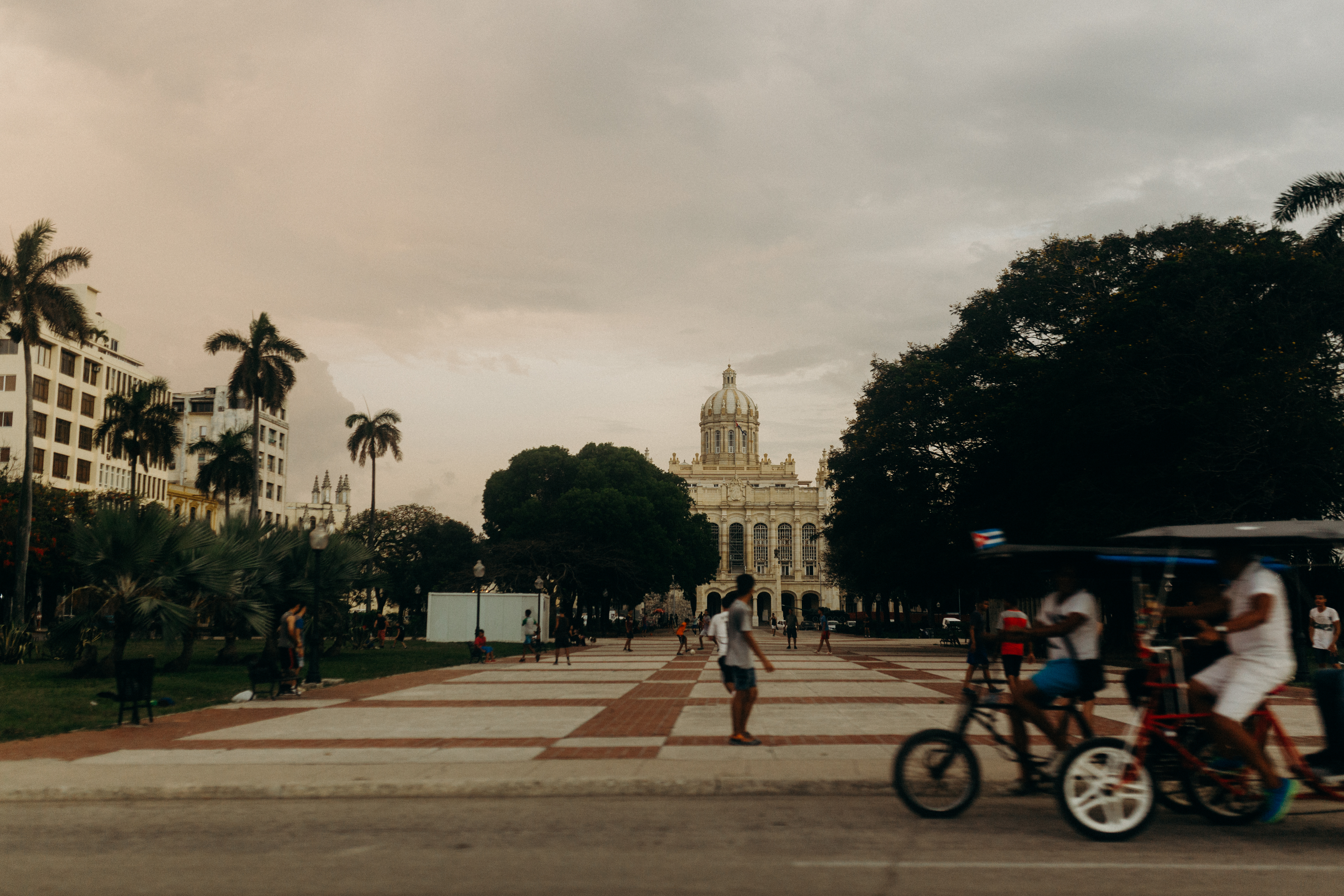
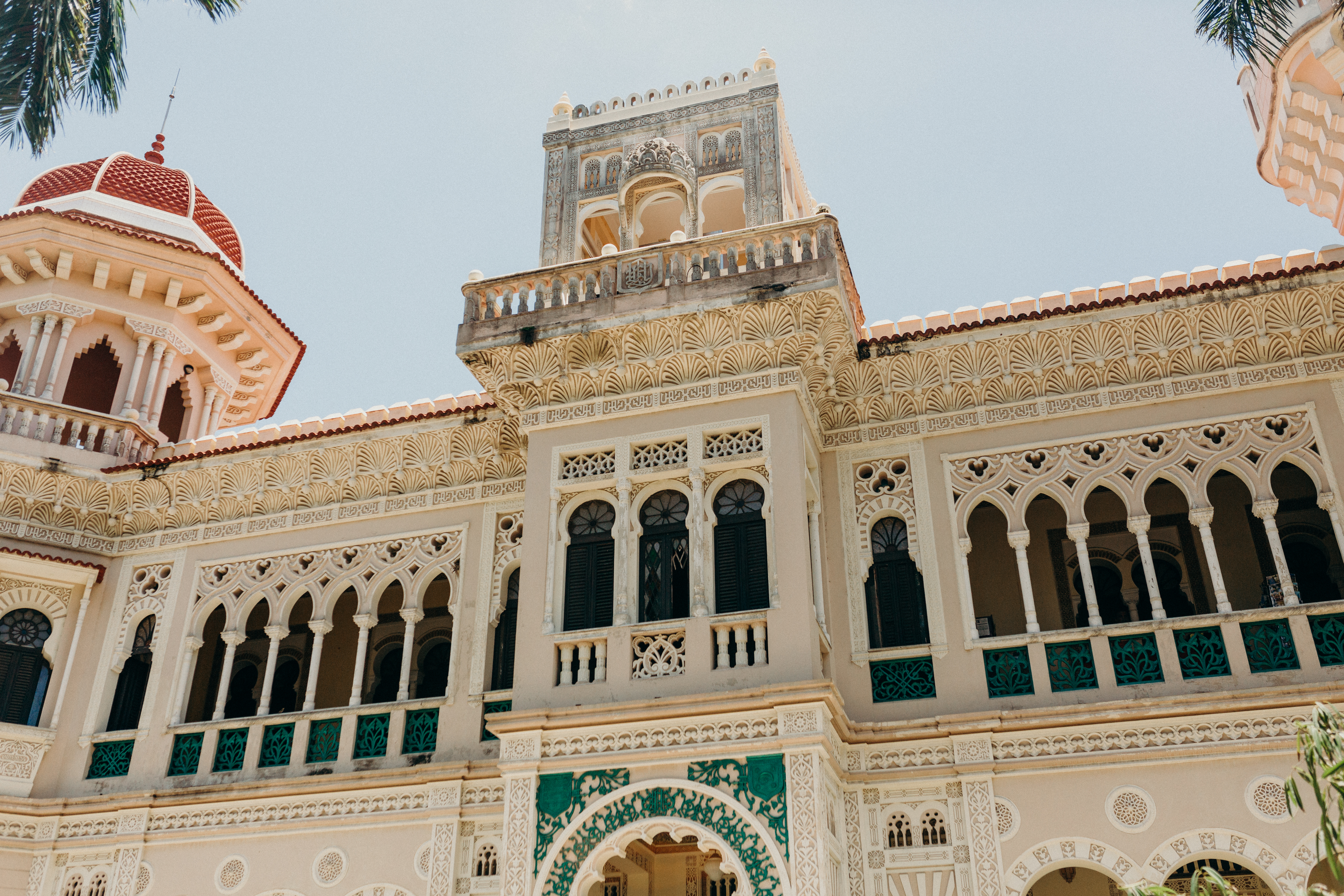
Getting around
With the new laws, Americans won’t be able to rent cars or take buses at all on their own since the Cuban government owns them. Your tour operator can book these things for you though.
– Don’t rent a car, it’s really difficult and expensive, and honestly I’d be way too scared to drive around with all the crazy drivers and pedestrians.
– Do hire a private car. A short ride across town is $10 and trips farther away can be closer to $60-$80 depending on where you’re going. You can have your casa host call and coordinate this, or if you’re not going too far, you can hail any vintage car diving down the street. They’ll often negotiate a price to wait for you at your location if you want them to. Plus they pull over and stop anywhere you want.
– Viazul bus – this is a cheaper public transit, but you cannot book online, only in person, and apparently it takes much longer to get anywhere outside of Havana. (I didn’t use this system, that seemed to stressful to me to save $20 a day, plus you couldn’t just pull over for photos.)
– Big group tours seemed to be a thing I saw lots of people doing. Though the large buses were sure to be comfy and have ac, I don’t like feeling like I’m in a herd of people and feeling time constrained.
– We did small private tours, which can be pricier than the larger tour groups, but is well worth the price in my opinion. They can arrange all your tours, lodging, food, and cars exactly to your liking, and you won’t be crammed into a bus or tour next to someone you don’t know. We had a few days arranged with our guide where we just walked around to different points of interest that he could tell us about and hailed our own taxis/bike taxis, and I loved having the same tour guide every day and having things planned out privately for us.
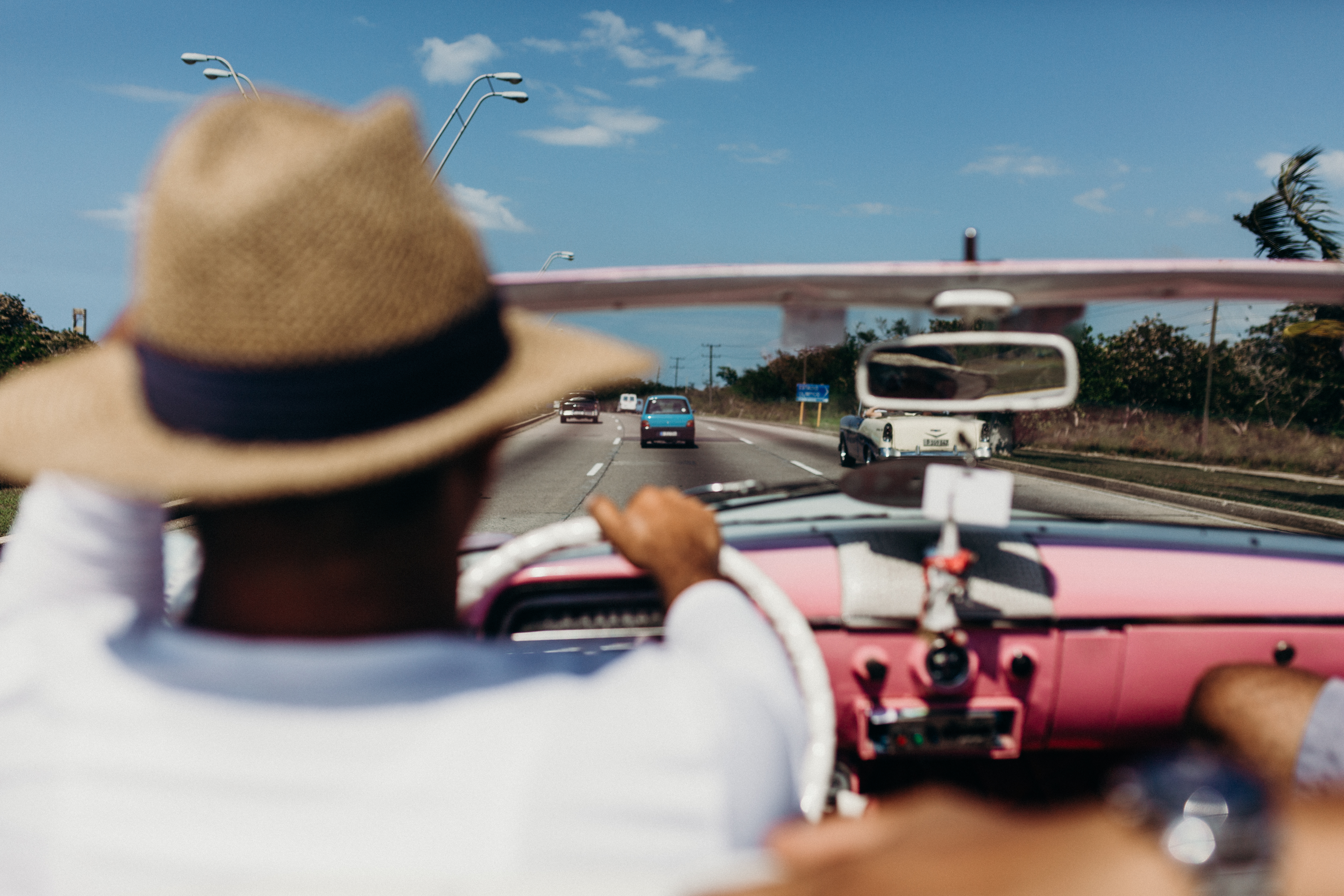
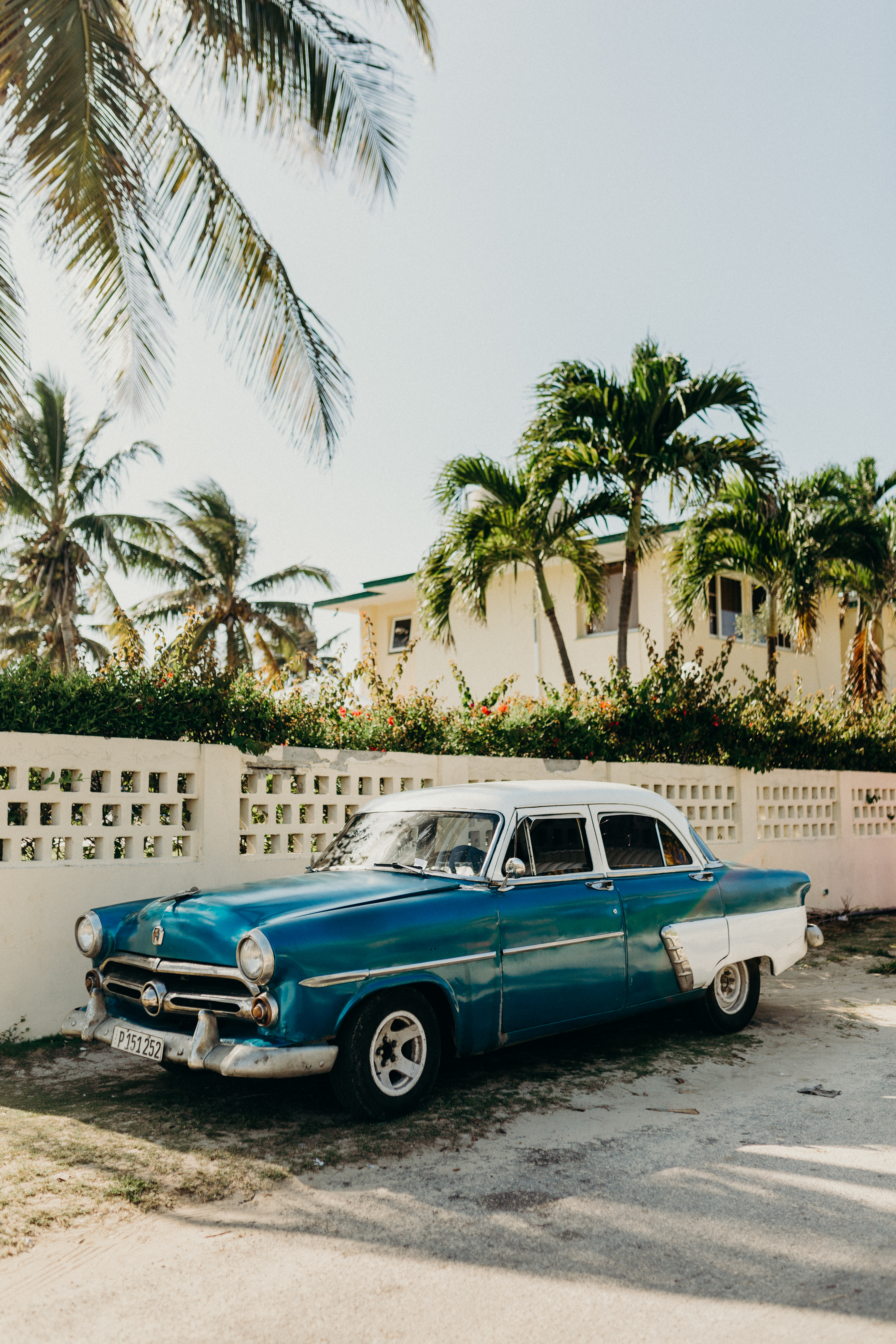

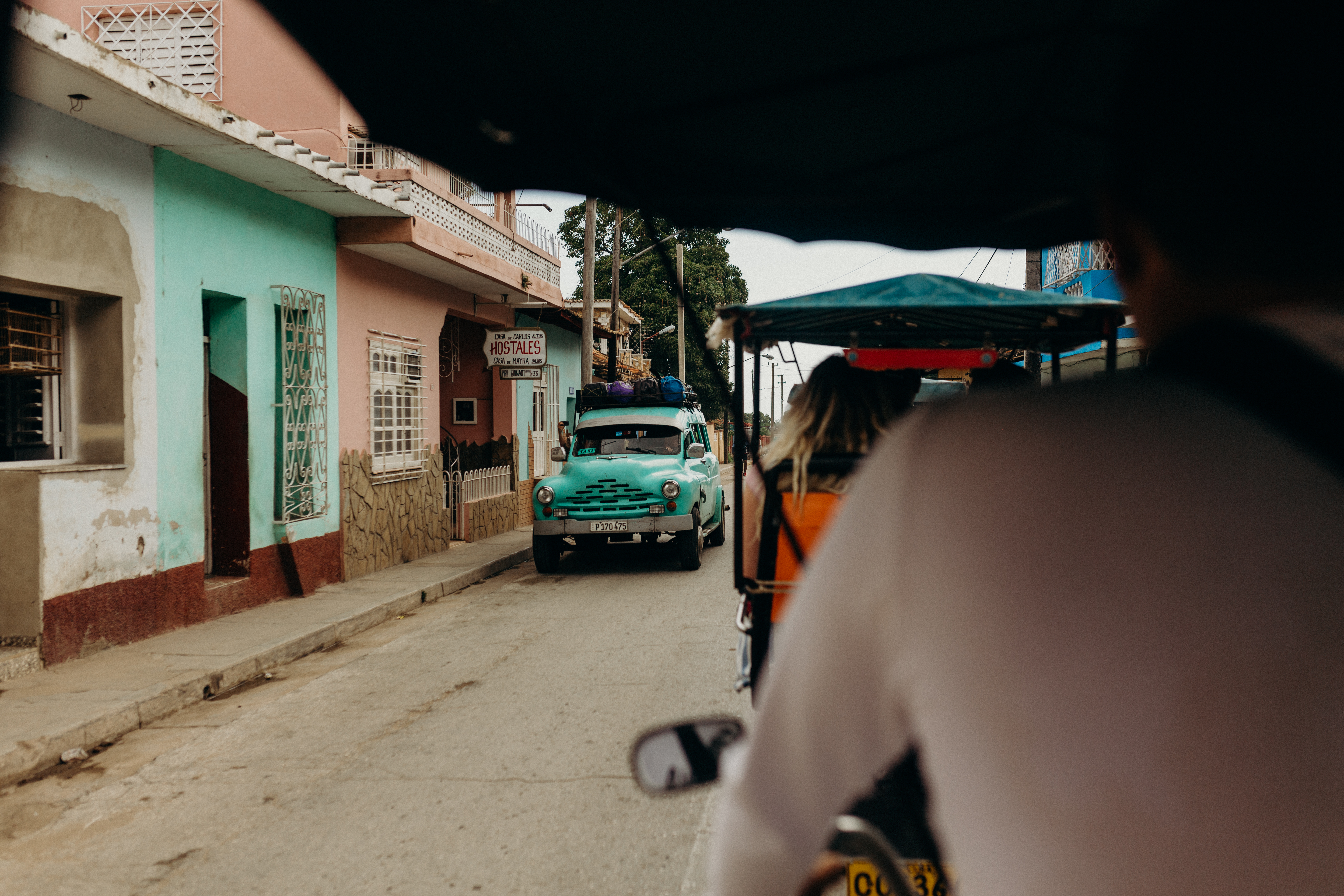

Tour companies to use
Once Trump’s policy changes become effective, it will be illegal to travel to Cuba without a pre-booked Cuba-legal American company. When first planning our trip we booked with a non-American company, as the rules just a few months ago were a bit more relaxed. When booking with them, I did very little research on them. And just my luck, about 5 days prior to our trip our agency reached back out to us to notify us that they actually couldn’t tour Americans. After two nights without sleep, I finally found INtouch Cuba. This is an American based company who I cannot say enough good things about. They fully customized our tour and gave us anything and everything they could, even as last minute as it was. We had the same local Cuban tour guide all 5 days, his name was Yassir, and I would highly HIGHLY recommend requesting him. He felt like our friend, and spent all day every day with us. Answering questions, making sure we got a specific color of car, getting us the best iced coffee there was. I think the group shed a few tears when we had to part ways with him. One other great thing about INtouch Cuba was how quickly they replied to my emails and questions, and that they took full payment via credit card online. This made me feel extremely confident in their reliability and reputation. This is a company that is still legal to use, and that will be legal to use even when the OFAC issues the new regulations.
The second company we used was a Cuban company. Intouch Cuba couldn’t make reservations for our guide to go with us to Trinidad so last minute. The Cuban company did pretty well in terms of tours and such, but the experience didn’t even compare to Intouch’s tours. They also required us to bring all the money in cash since they are a Cuban company, and I really hated having over $1000 CUC on me the whole week. Even if the rules weren’t changing to say you had to book with an American company, I’d still recommend you to just book everything with Intouch Cuba. It is well worth every penny.
Safety
Cuba is an extremely safe destination. That being said, I still didn’t wear my diamond wedding ring, or sport anything flashy. I did have a large camera out at times, and walked alone with another female at night from time to time. Of course, with this comes common sense. Do ask your host if there’s anywhere to avoid and heed that warning.
Places to visit, my favorites
I really really wish that there had been more info on the web about Trinidad, Cienfuegos, and Vlnayles when I was planning our trip. Everything I read said to go to Havana and just do day trips from there. If I could redo my trip, I’d go to Havana for only 2 of our 8 days, then go on to spend a few days staying in Vinales, Cienfuegos, and Trinidad. I really liked Havana, but it didn’t even compare to the other cities. They are overall smaller, cleaner, and I just really enjoyed them more than Havana. As did the entire group.
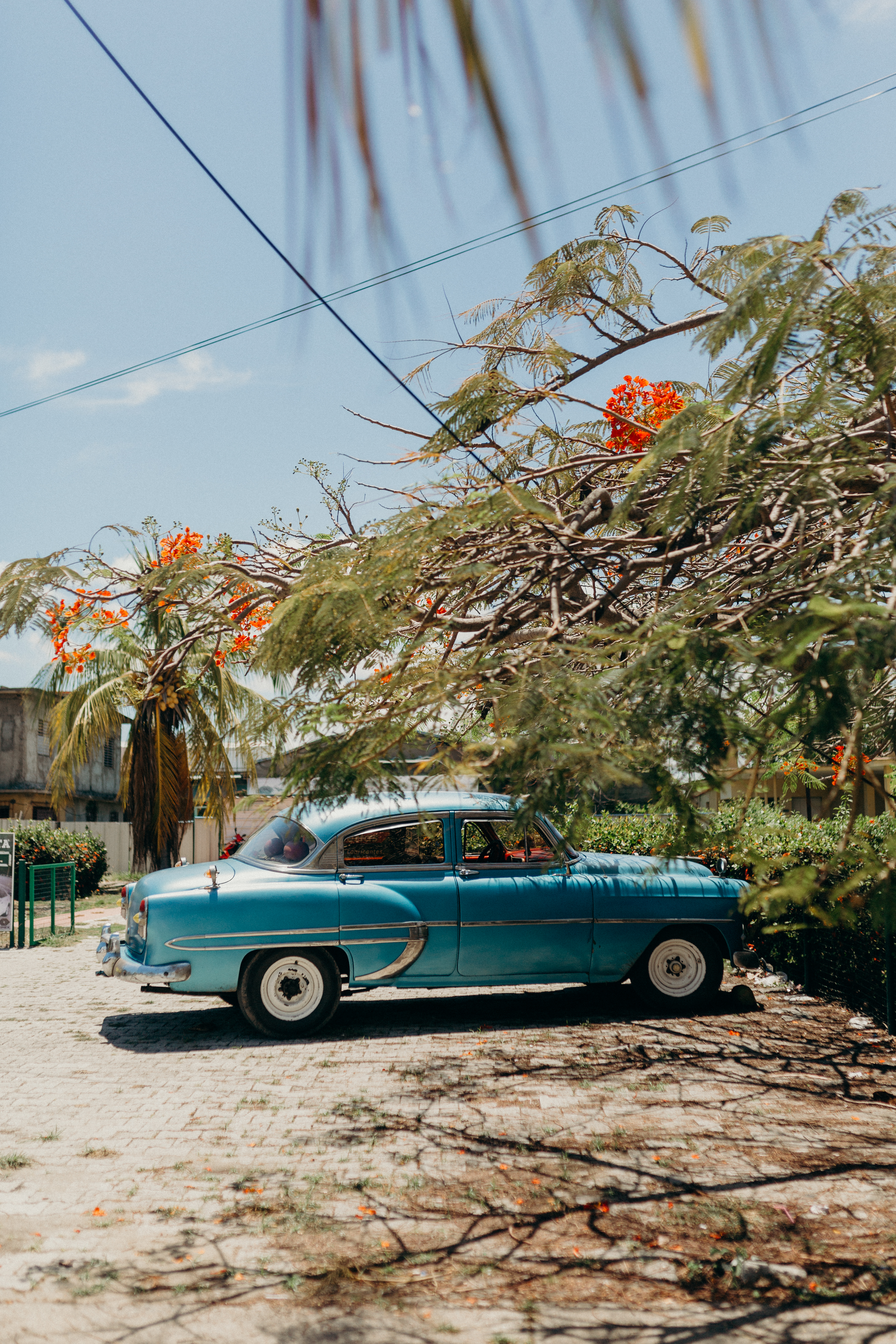

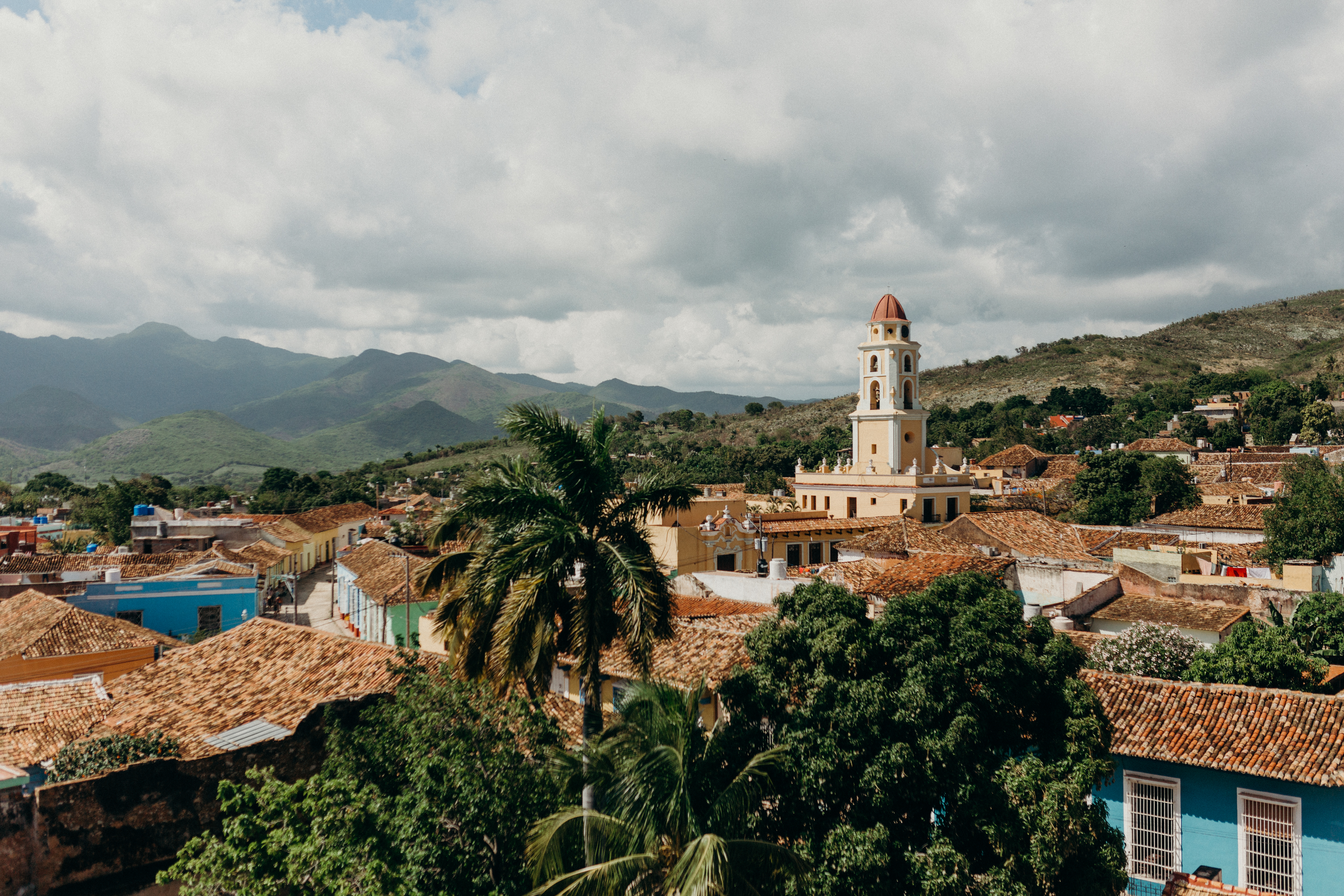
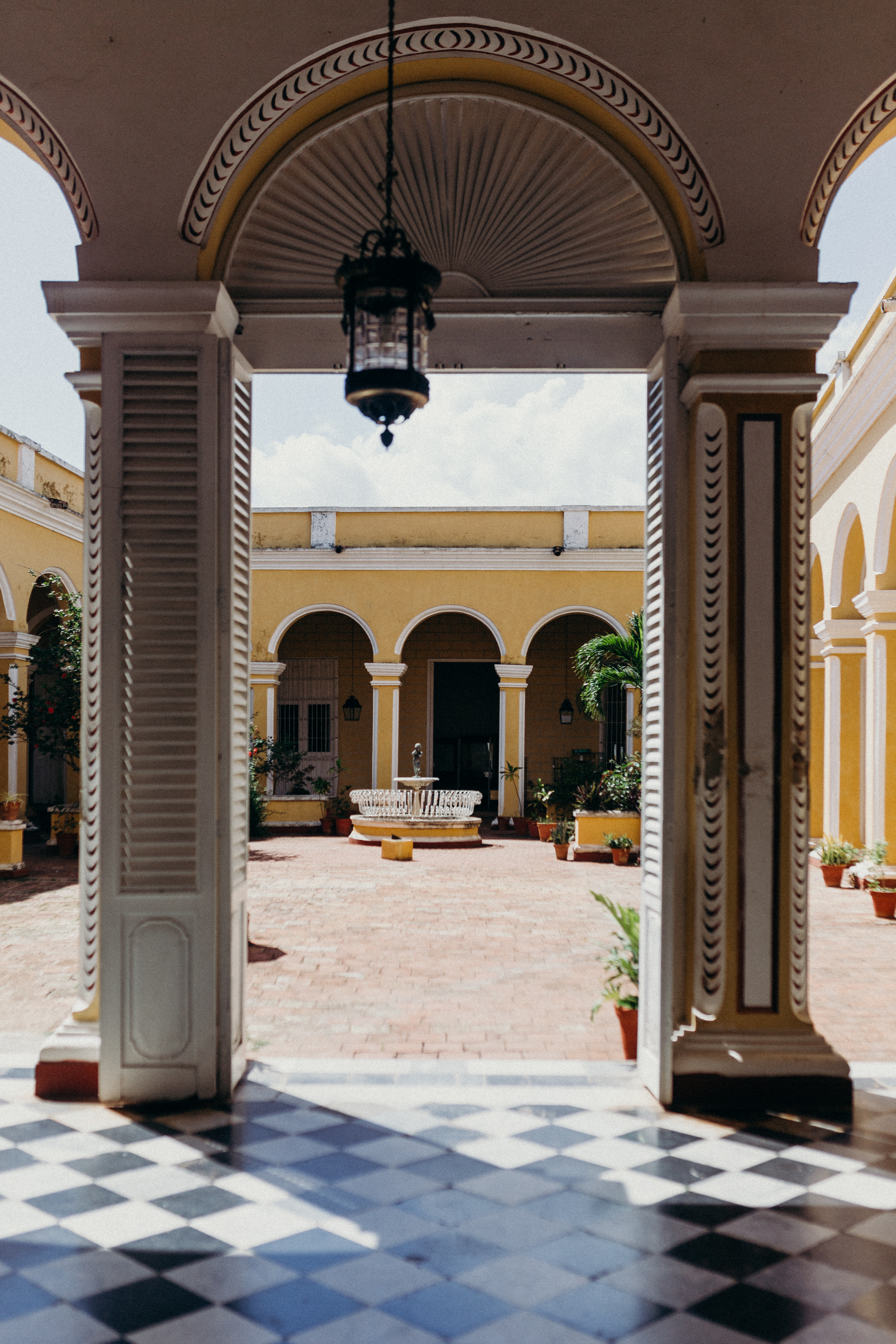
Other tips:
There are literally NO SNACKS. The occasional local market will have the dried out bread crackers or some cookies, but there is nowhere with granola bars or apples, etc. I brought some cliff bars from home, but definitely should have brought more. I thought people were exaggerating when I heard this, but seriously, take heed.
Basic Spanish. I by no means speak Spanish. I took it in highschool. I knew a few phrases about stores or restaurants, things like that. Basic vocabulary. I was shocked that I and only one other in our group could speak minimal Spanish, and so we ended up doing a lot of translating whenever we didn’t have our guide. Luckily the Cuban people are very kind and can mostly speak broken English or gesture to help you understand, but if I and one other person hadn’t know very basic vocab, it would have been much harder to get around.
Cafe frio or cafe frape. If you’re a coffee enthusiast, these things will help you through the heat of the day, and most cafes will make them for you.
Be prepared to be a bit uncomfortable with heat. Maybe I’m a baby because I’m coming from Alaska, but man, that heat was rough when you didn’t have AC.
Why you should go now
If you want to go and do things a little more freely, go asap. It took Obama’s change in policy about 4 months to take effect. Though I wouldn’t bet on this taking the same amount of time, if you can get there in the next 2-3 weeks, you may still be able to walk about freely.
Your visit helps cubans. From tour guides to taxis, Paladars to Casas, your visit is helping the people of Cuba.
A blast to the past. It really does feel like you’re stepping into the past. Havana is crumbling because it is illegal to restore historical buildings. The cars are preserved from the 50’s. There are palaces and courtyards, balconies and rooftop bars. The variety of styles are a direct influence of when the different countries went to Cuba and spent time there. French, Moroccan, American, Spanish. It’s absolutely fascinating, and I’m sure that you’ve seen an influx of photos from the awesome country as of late. With all this new traffic, who knows how long it will remain preserved as a perfect glimpse into the past.
